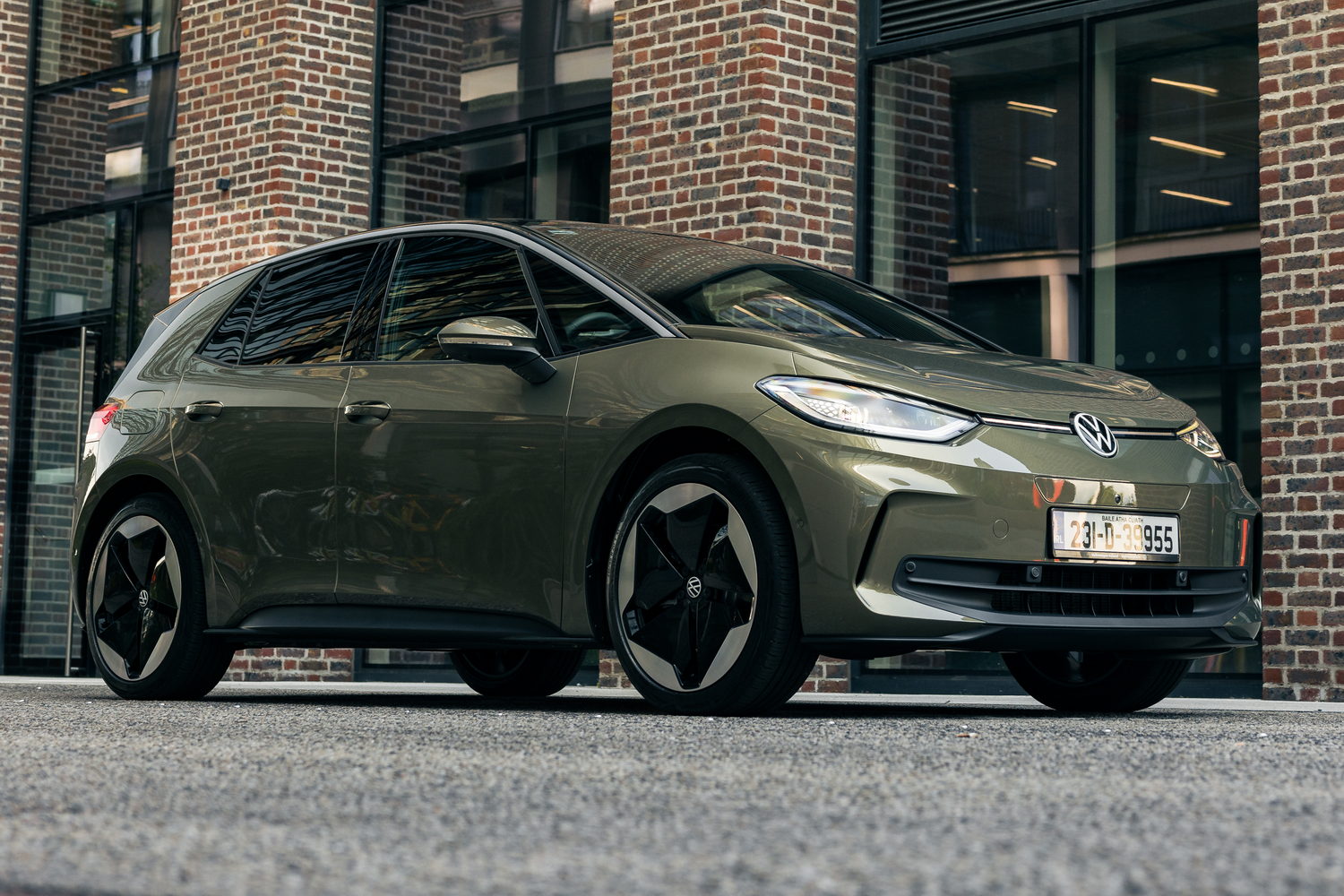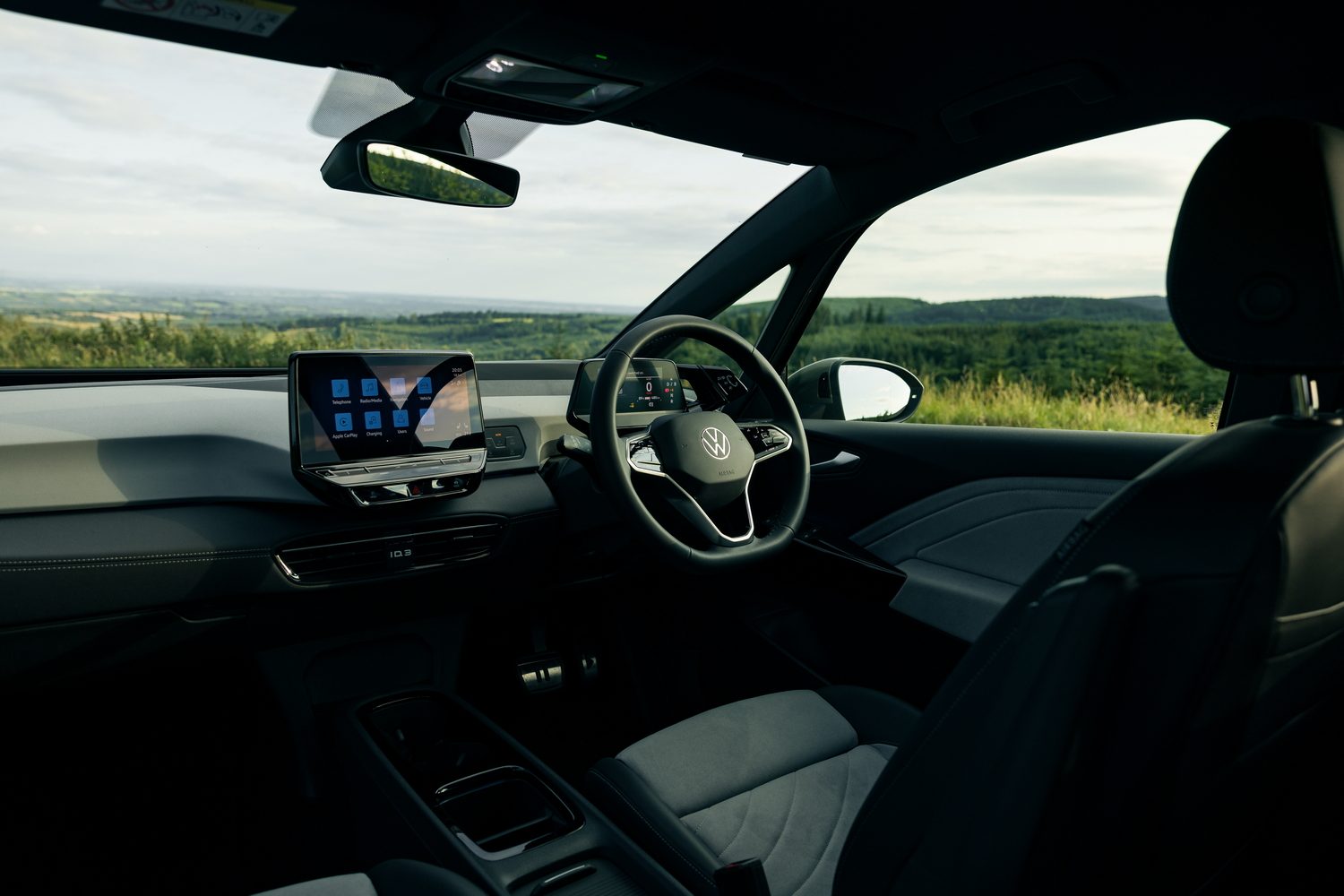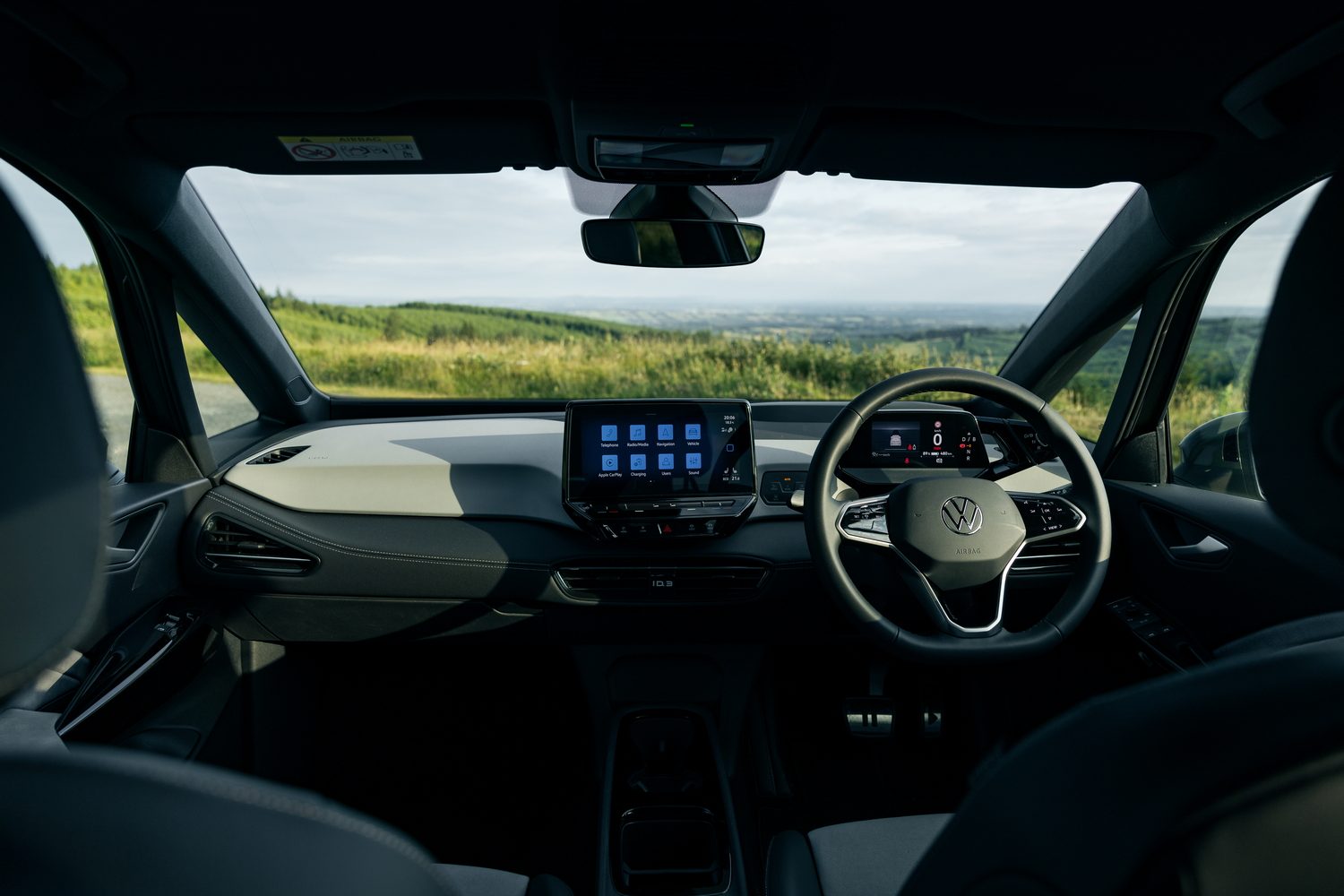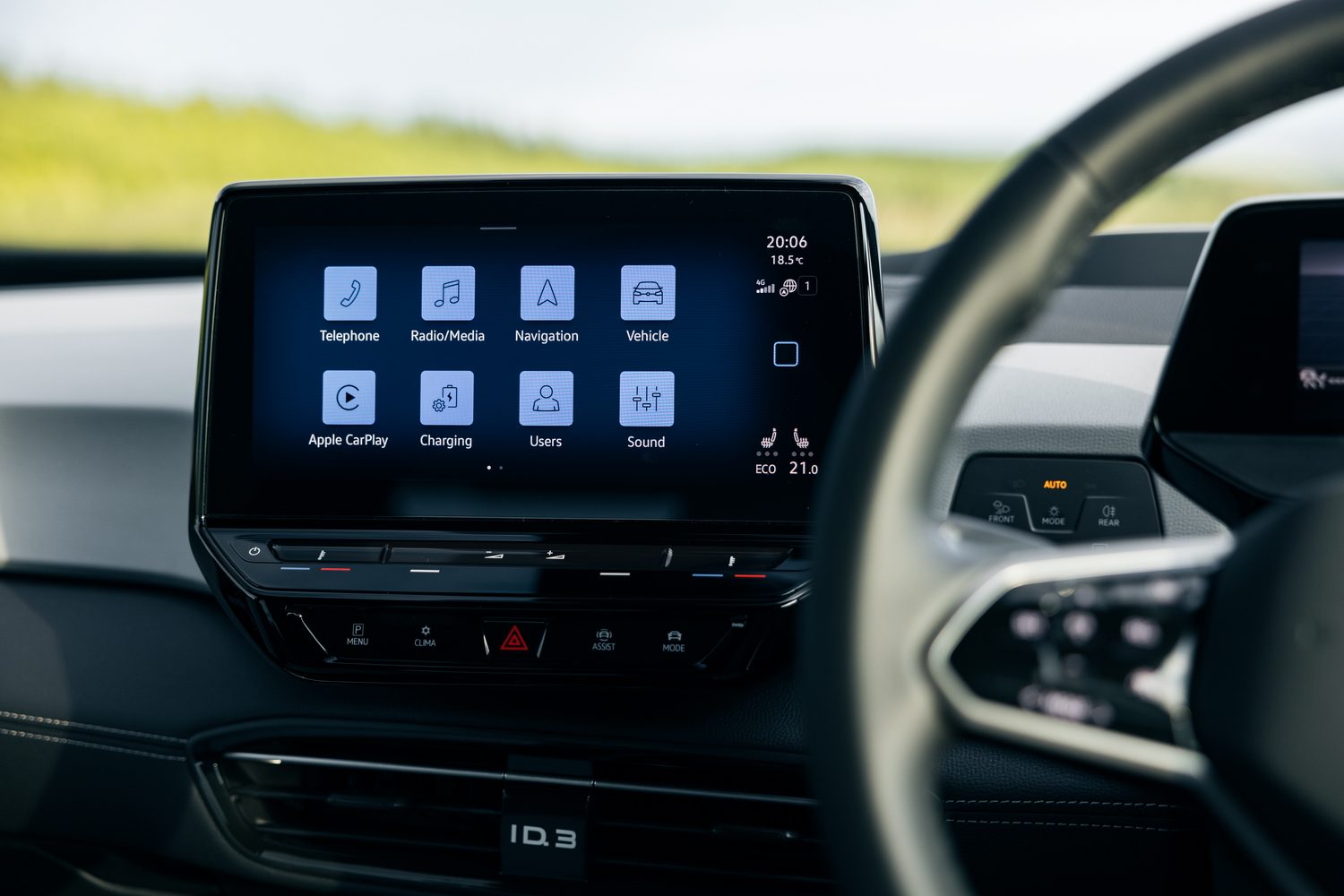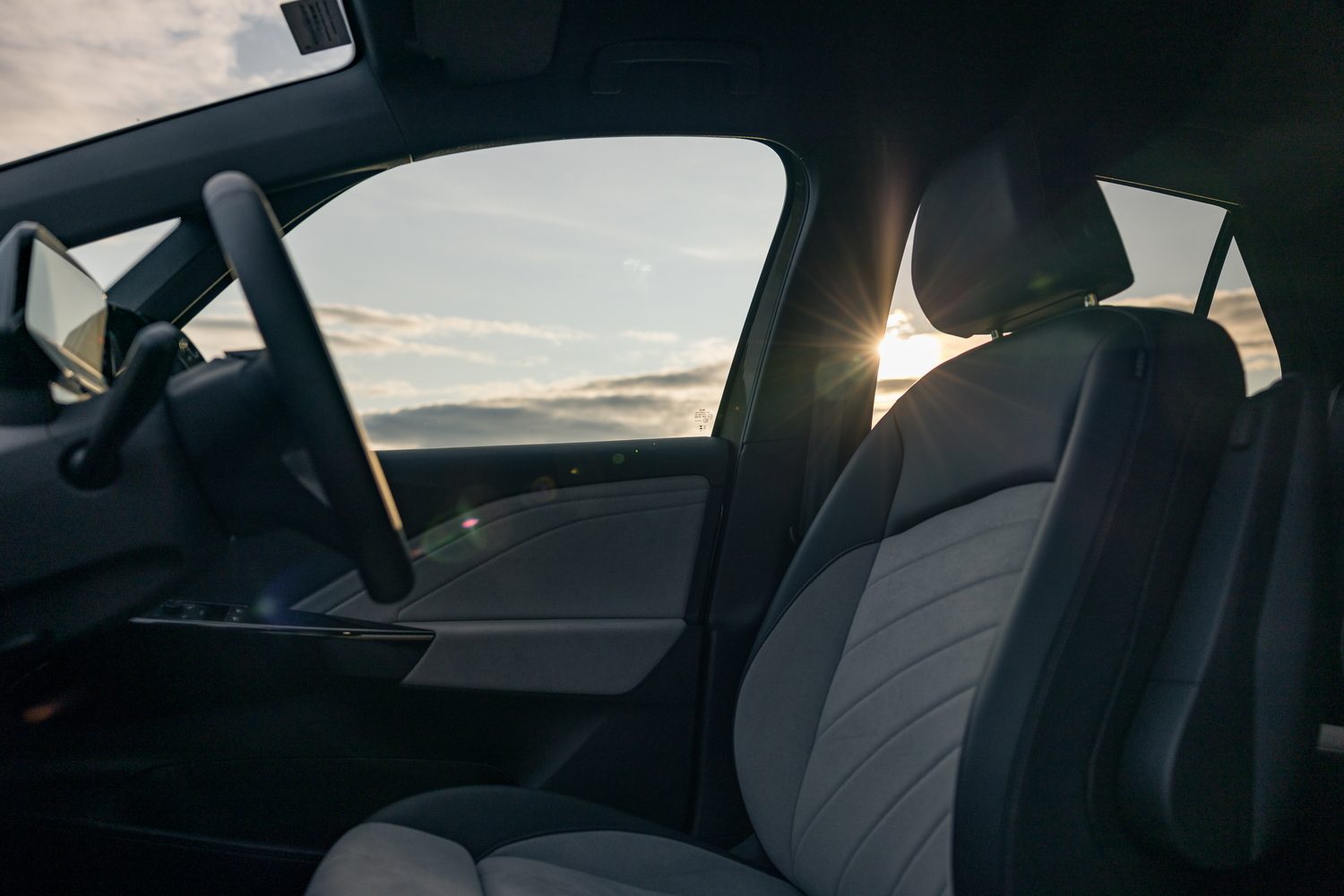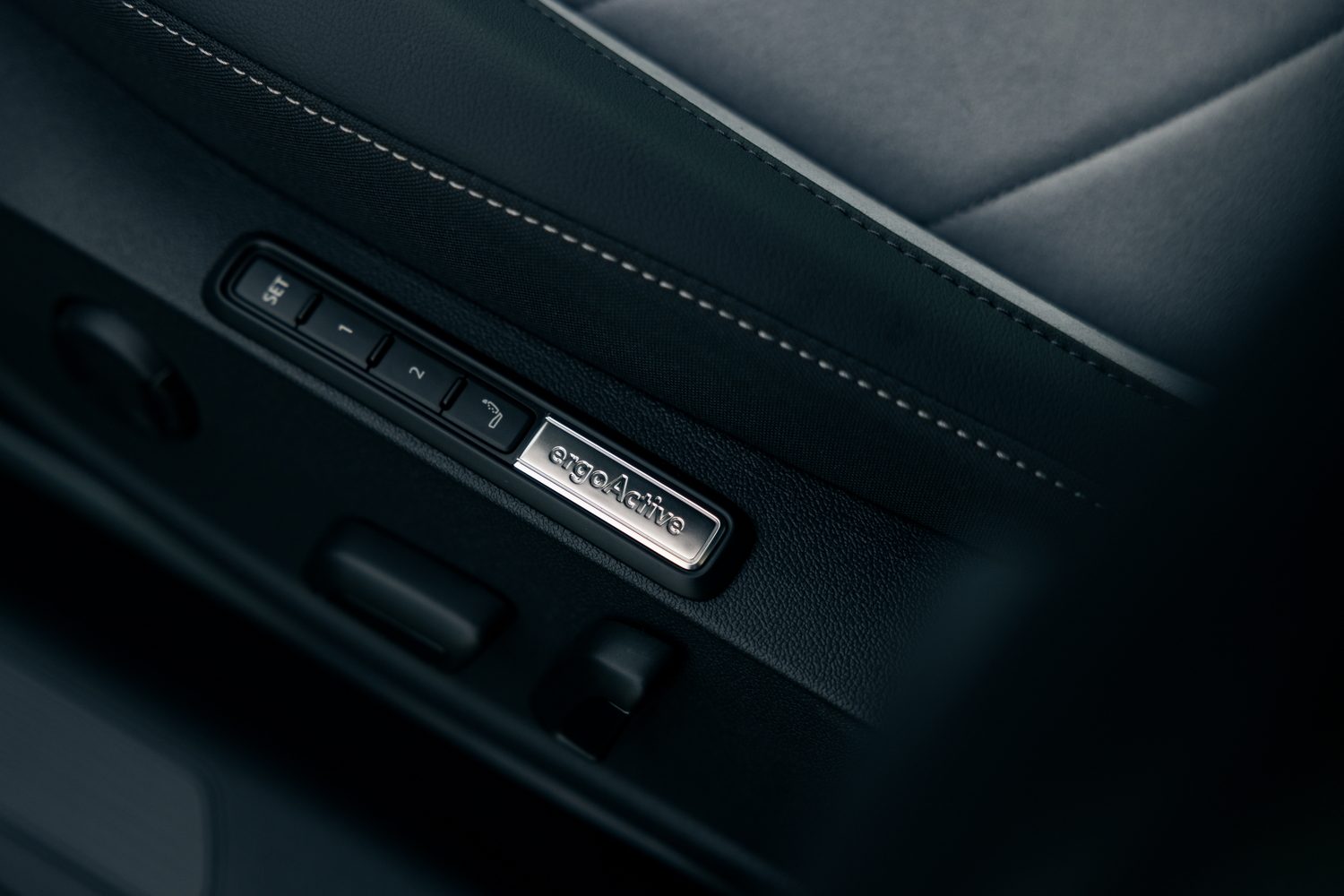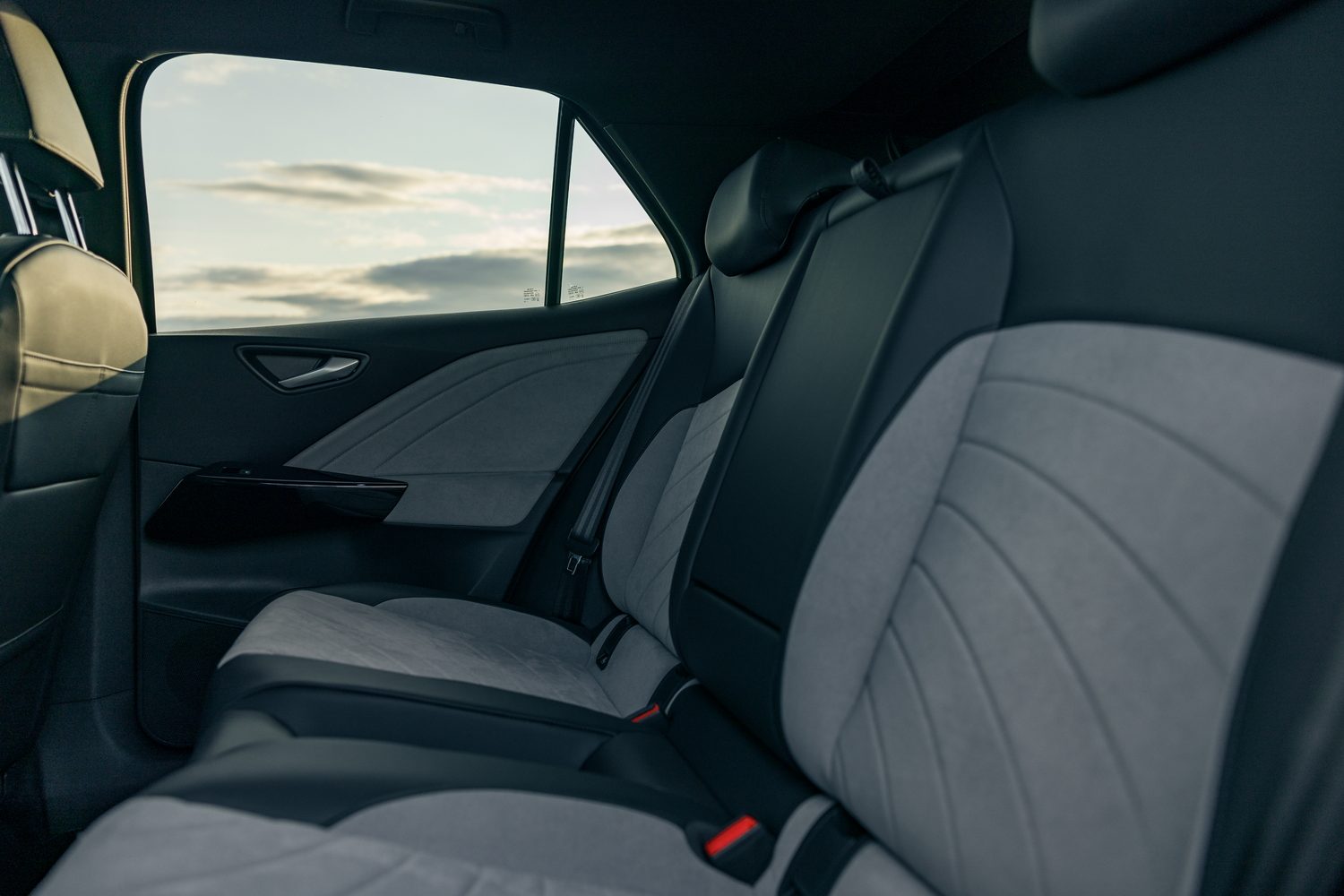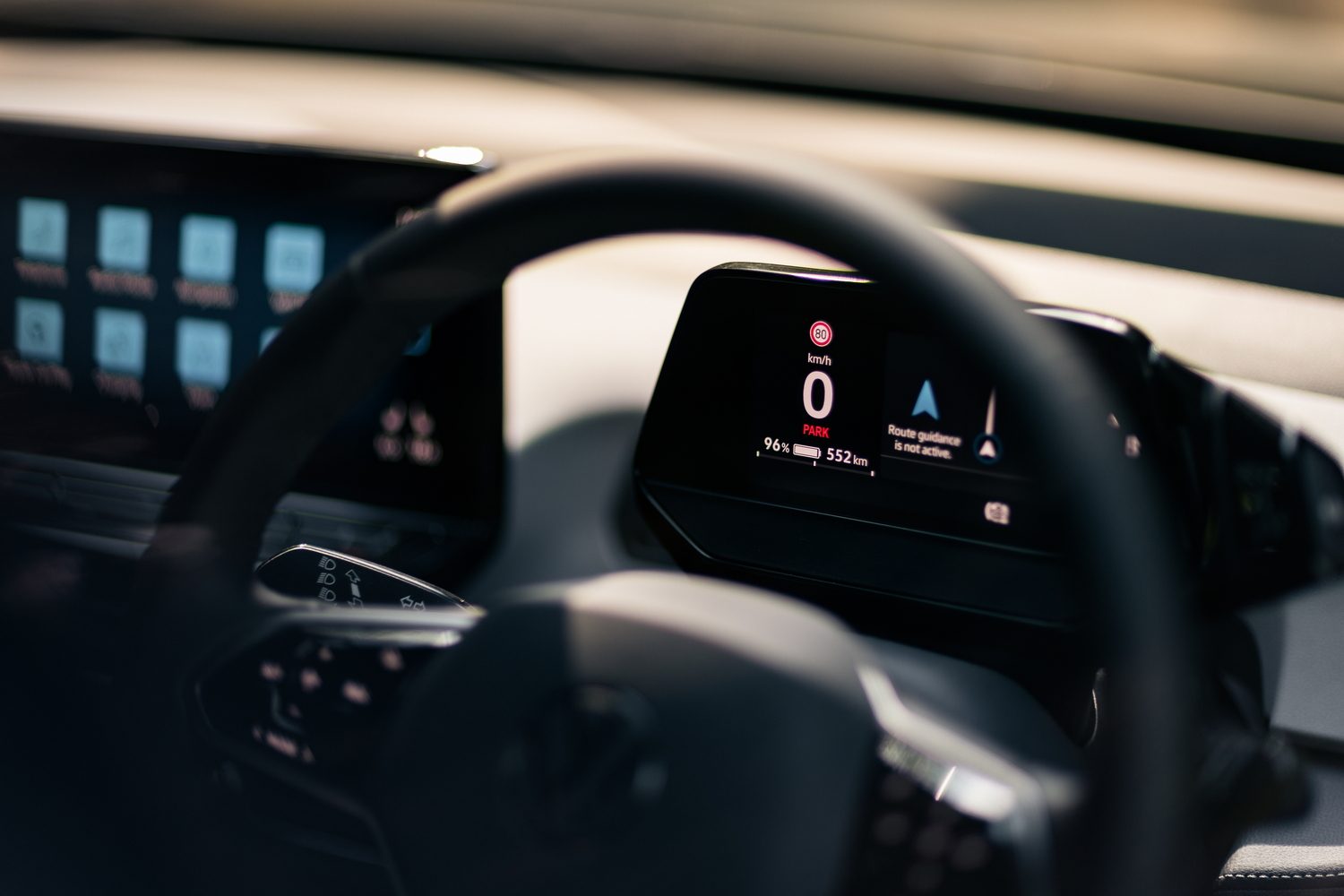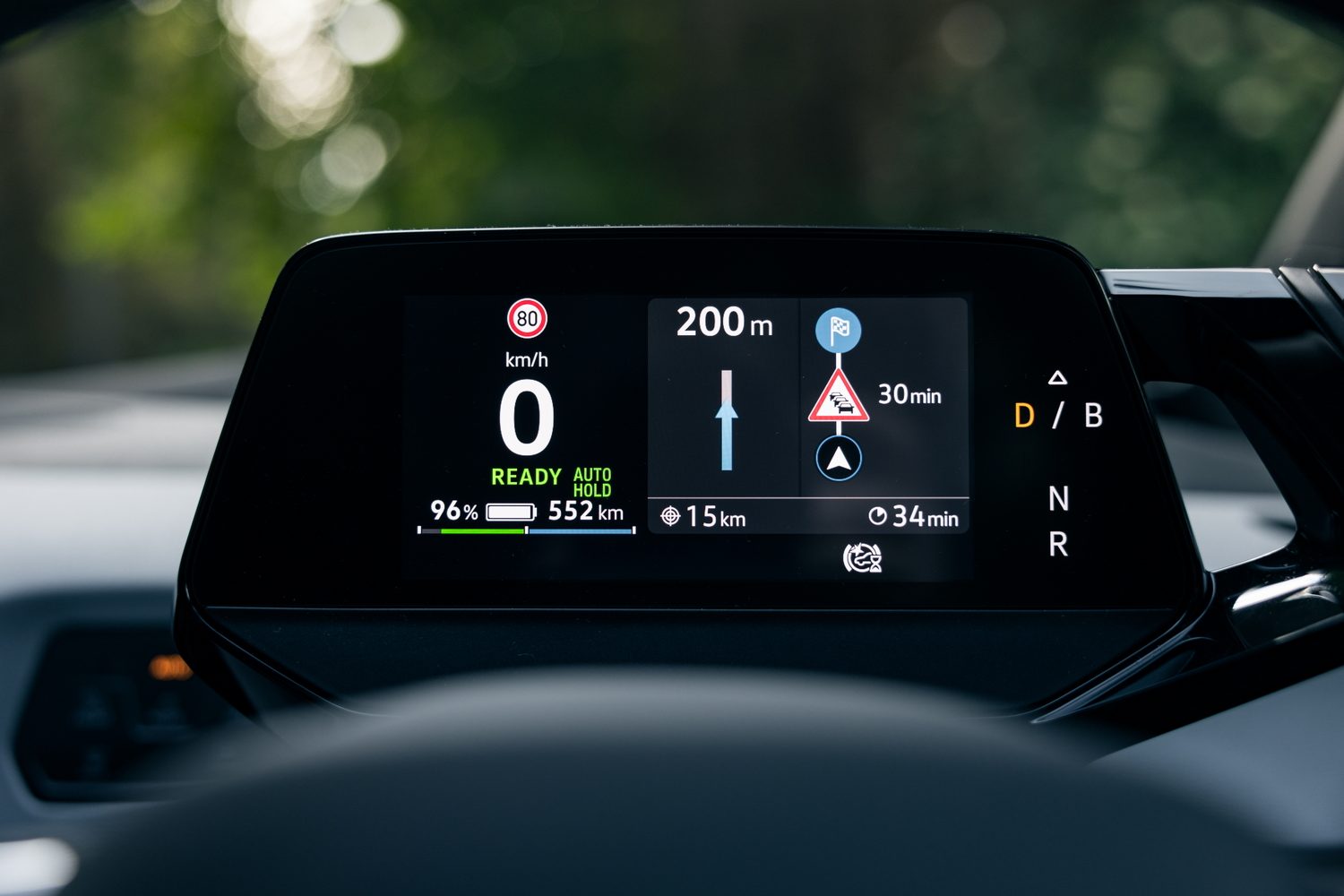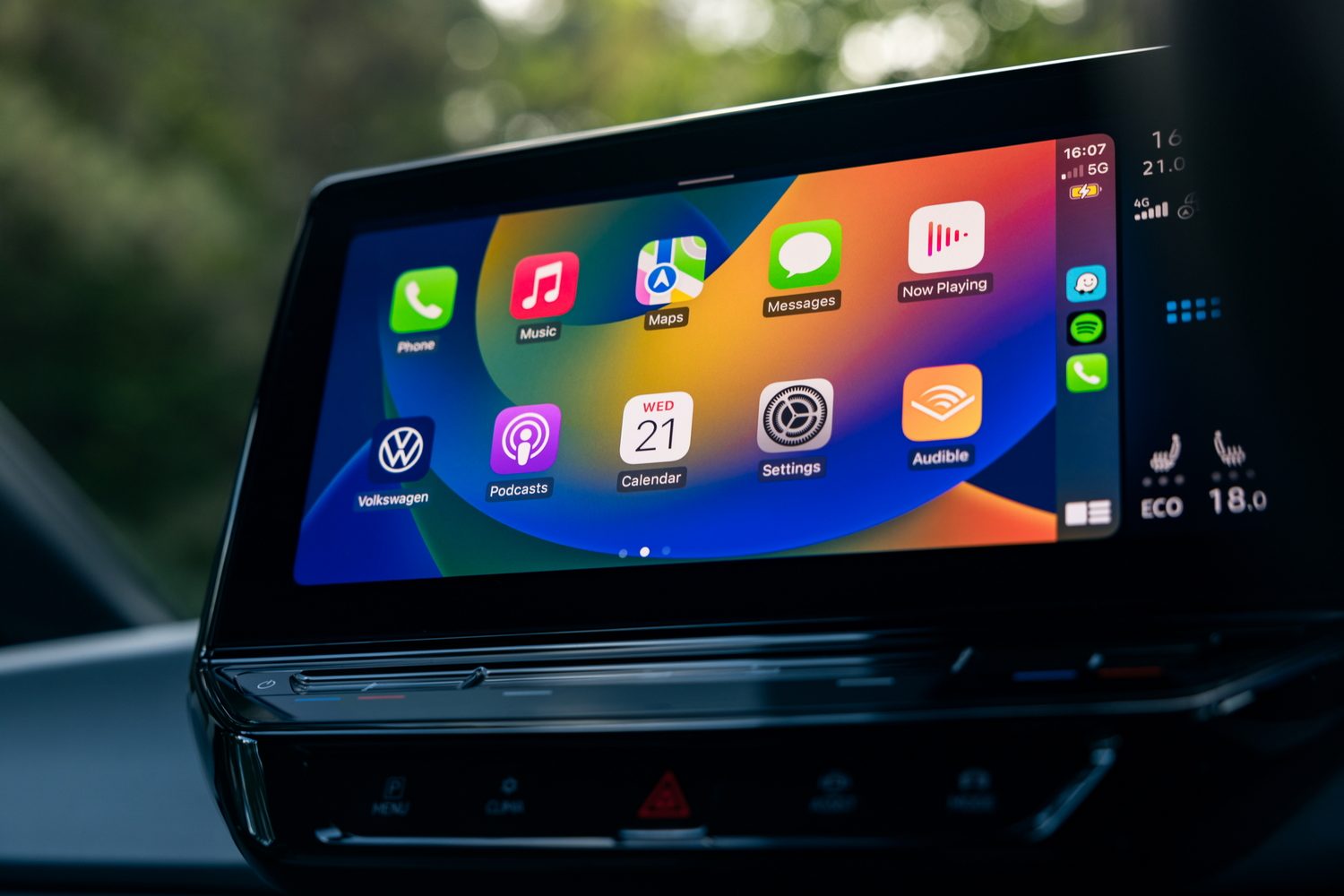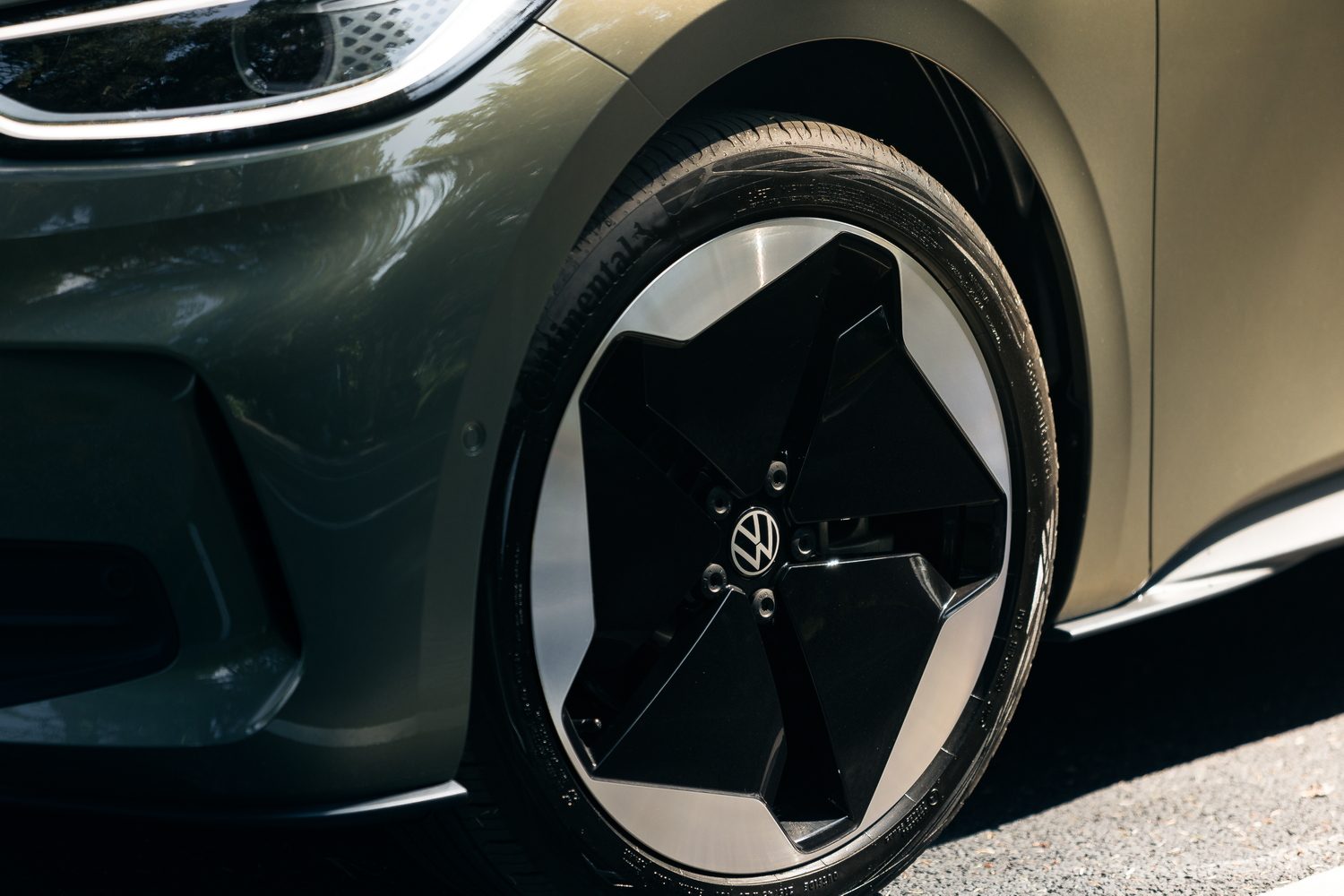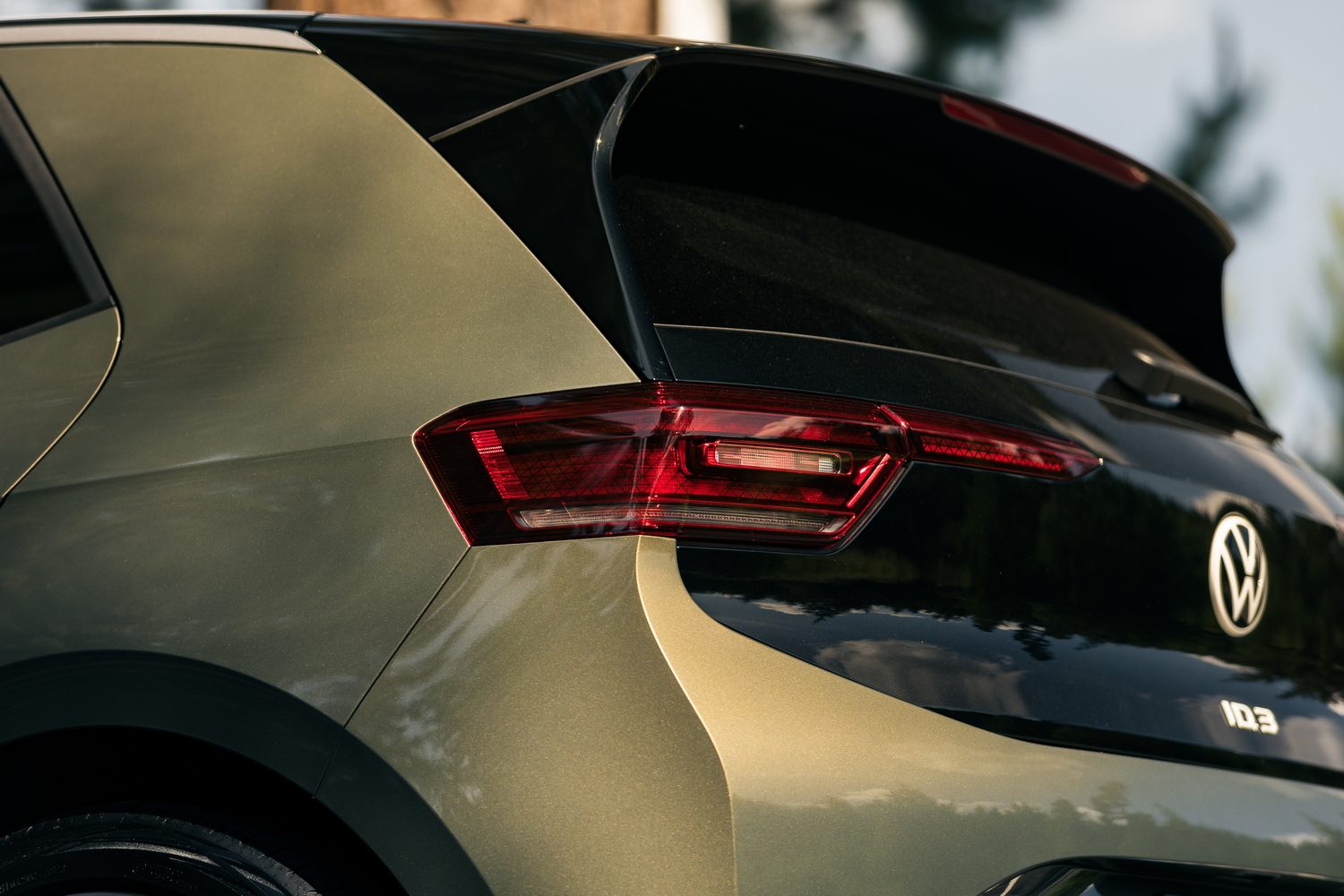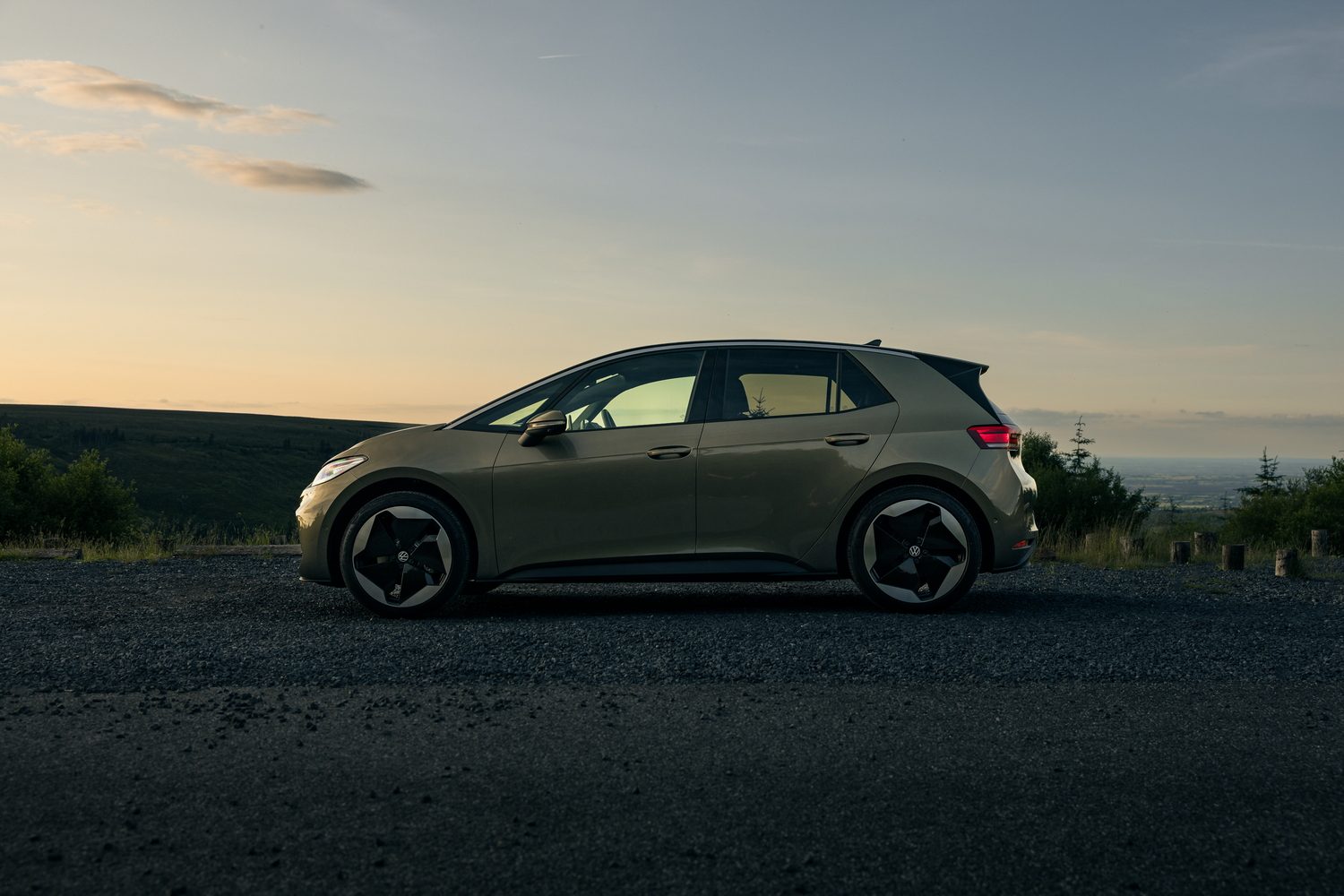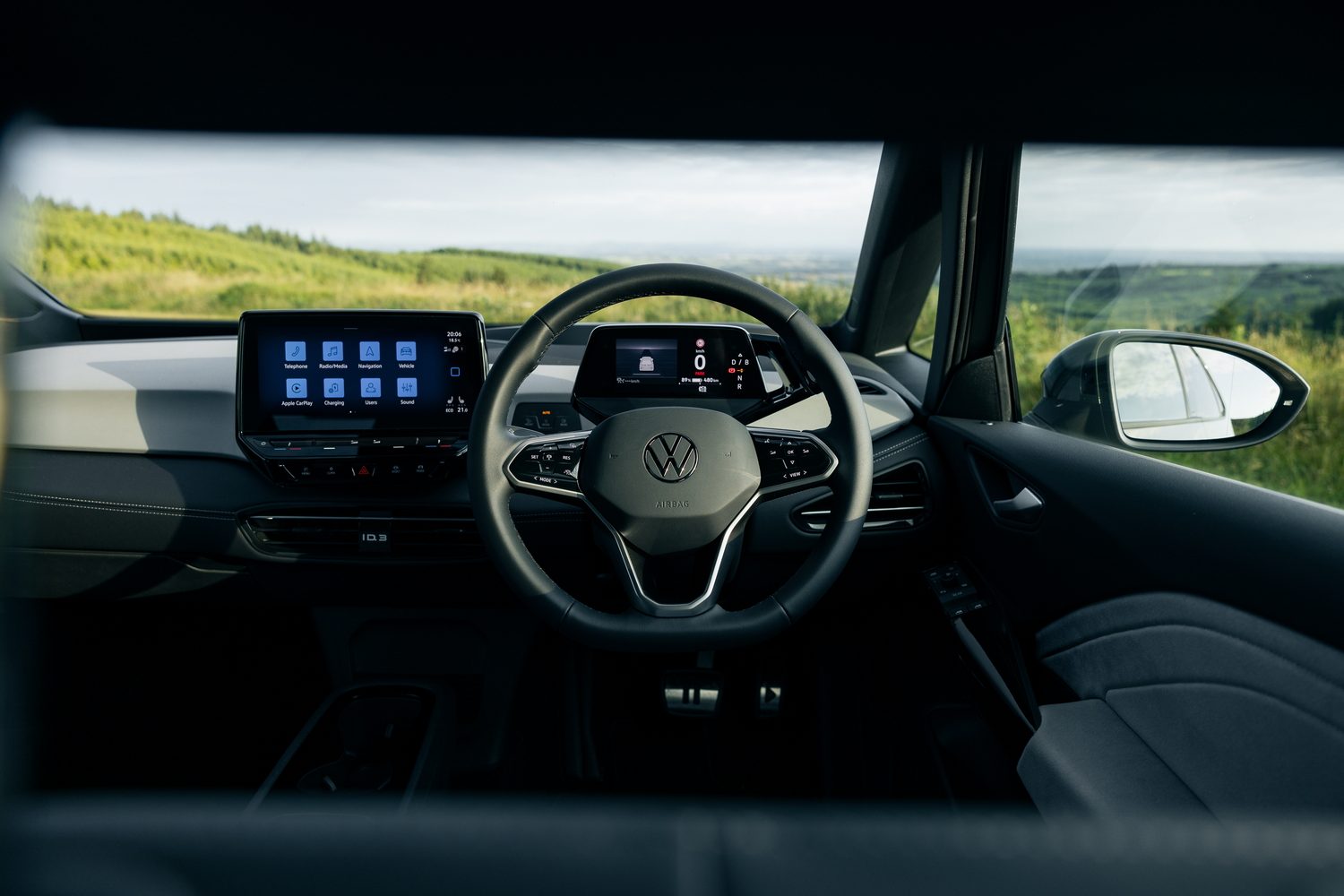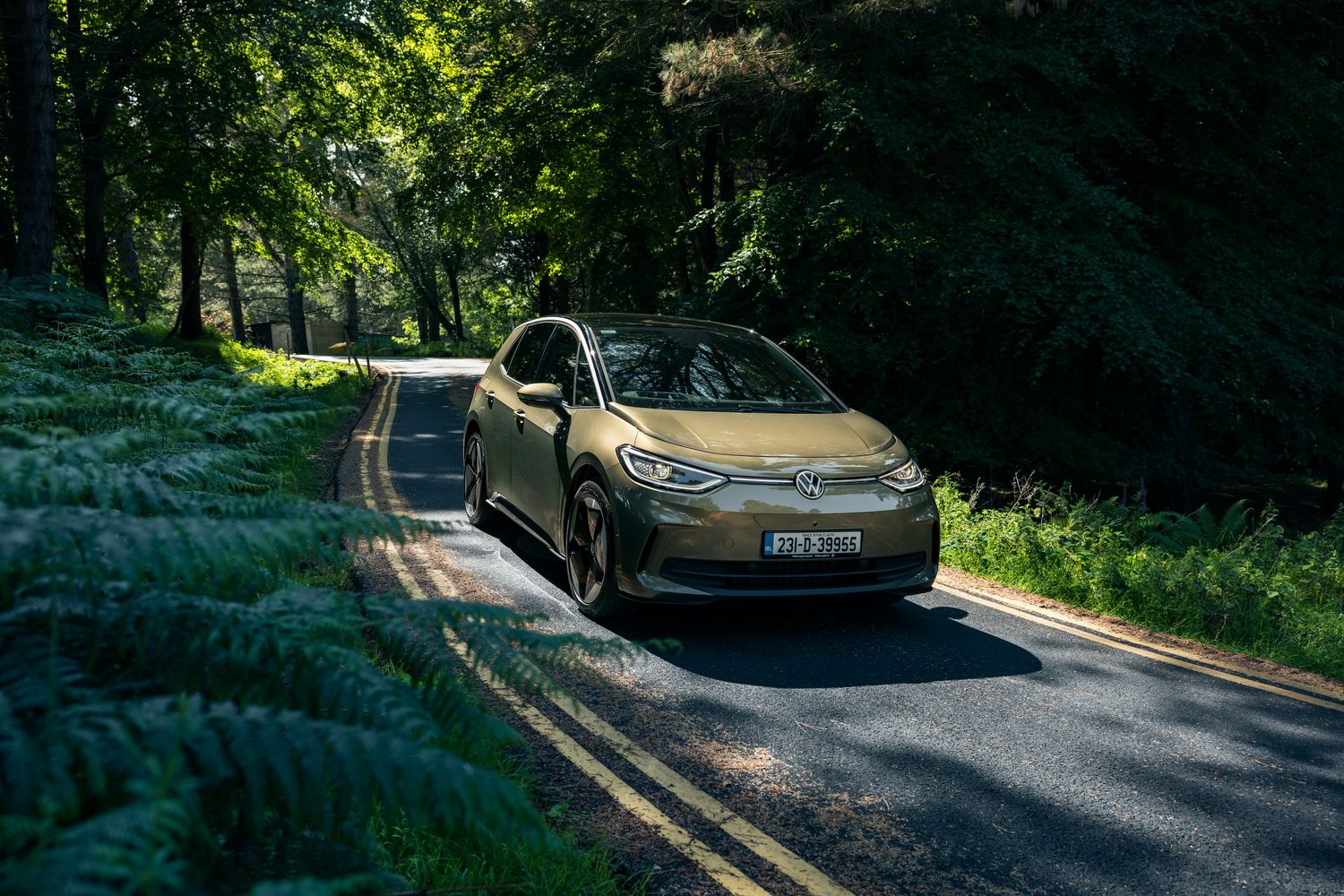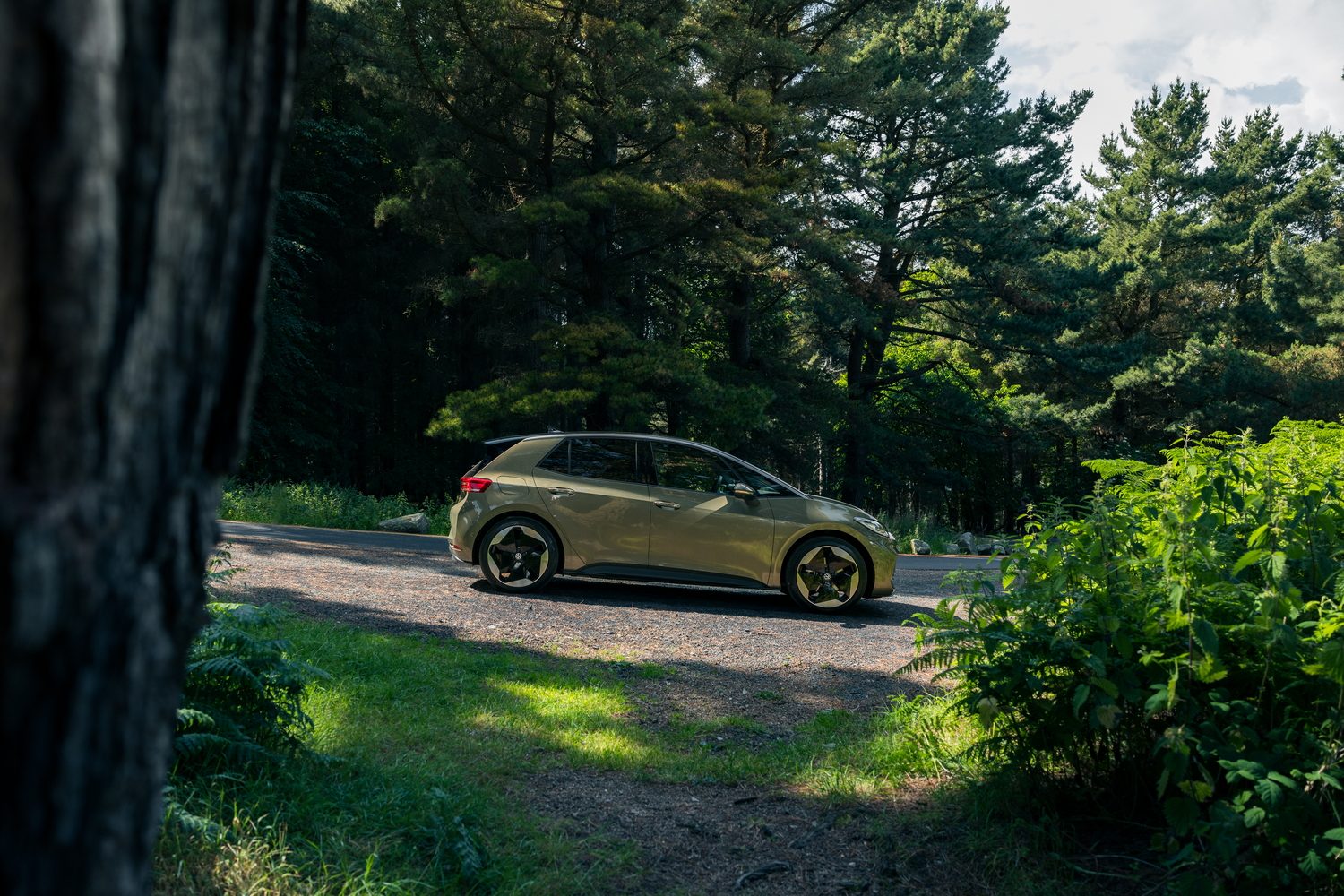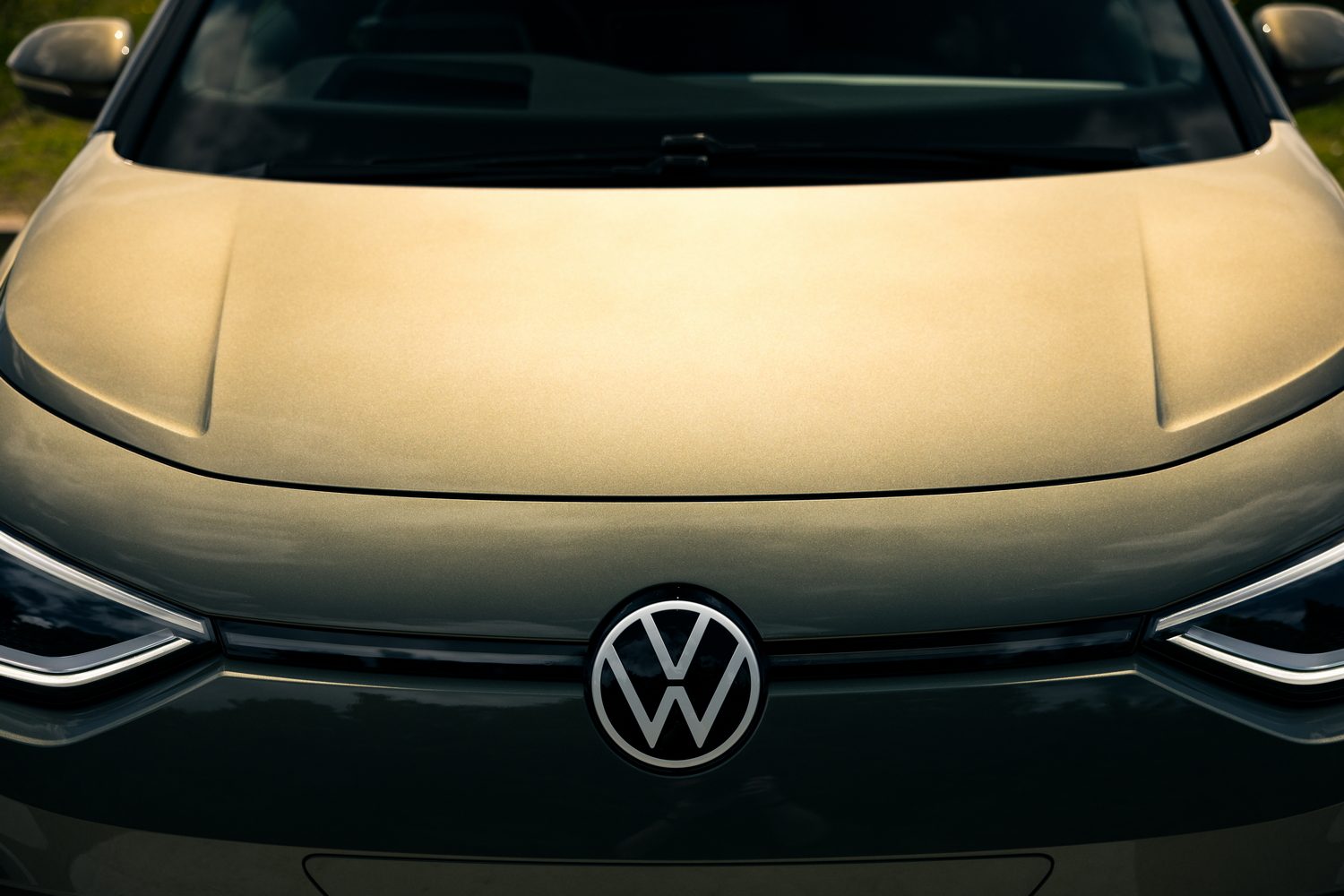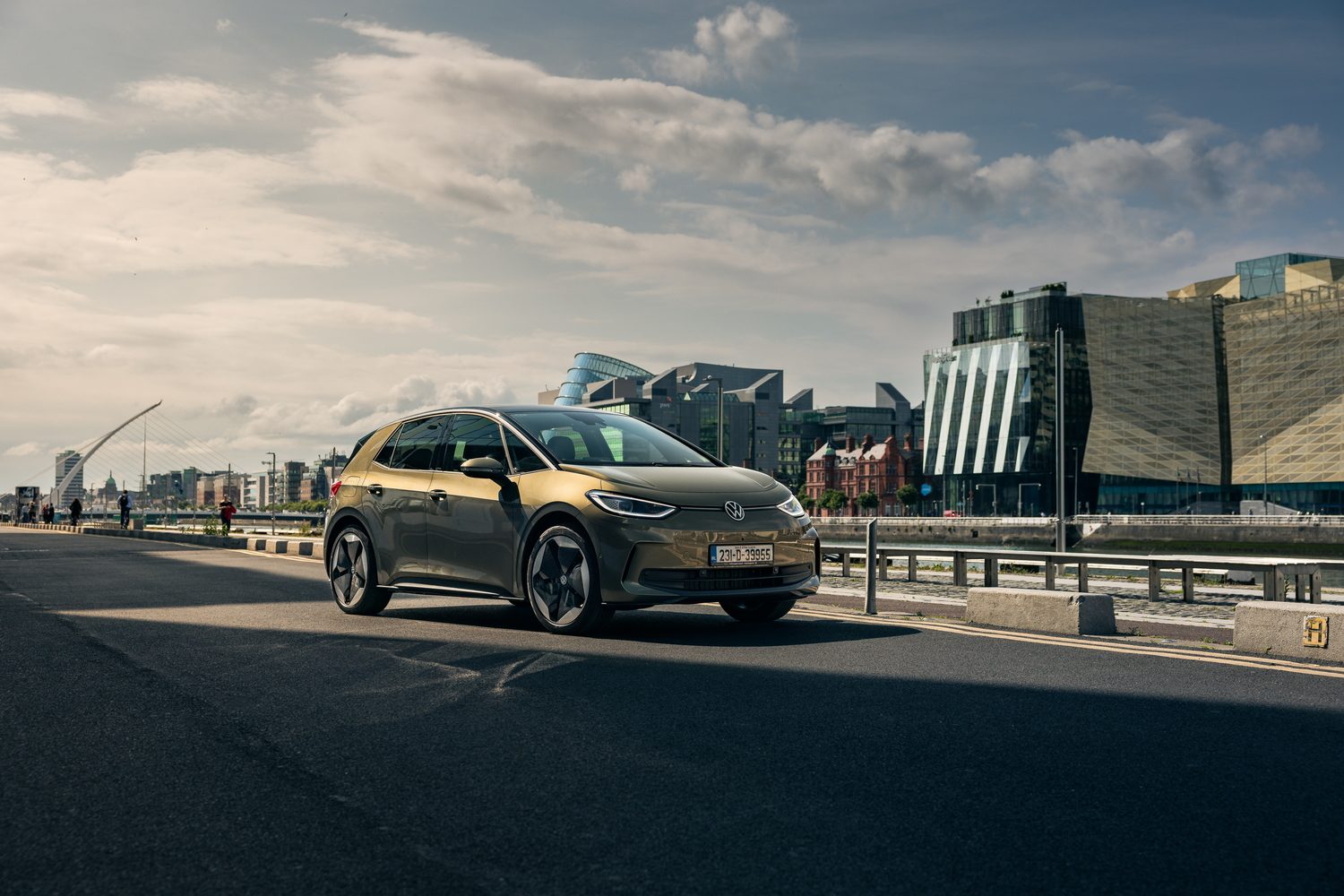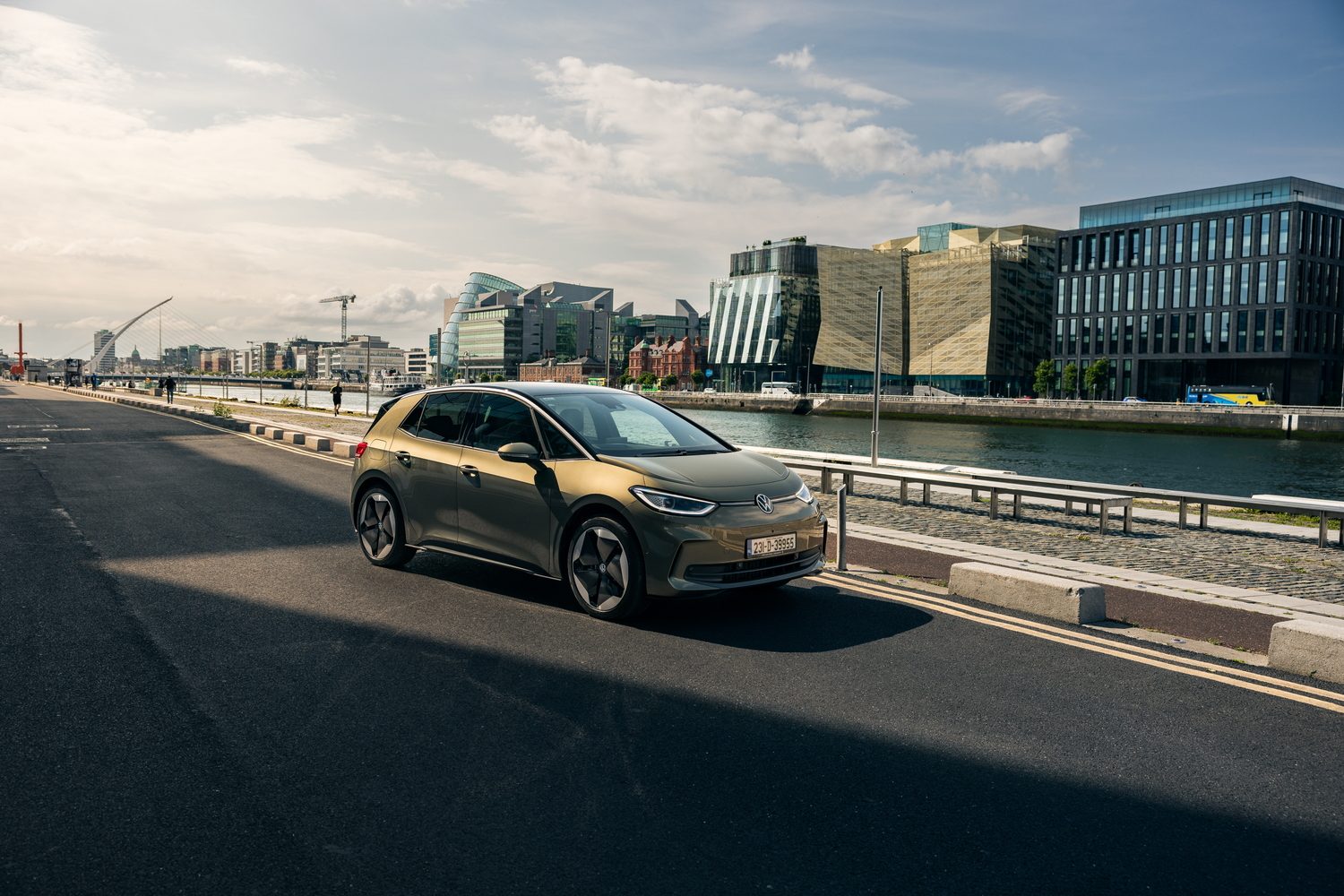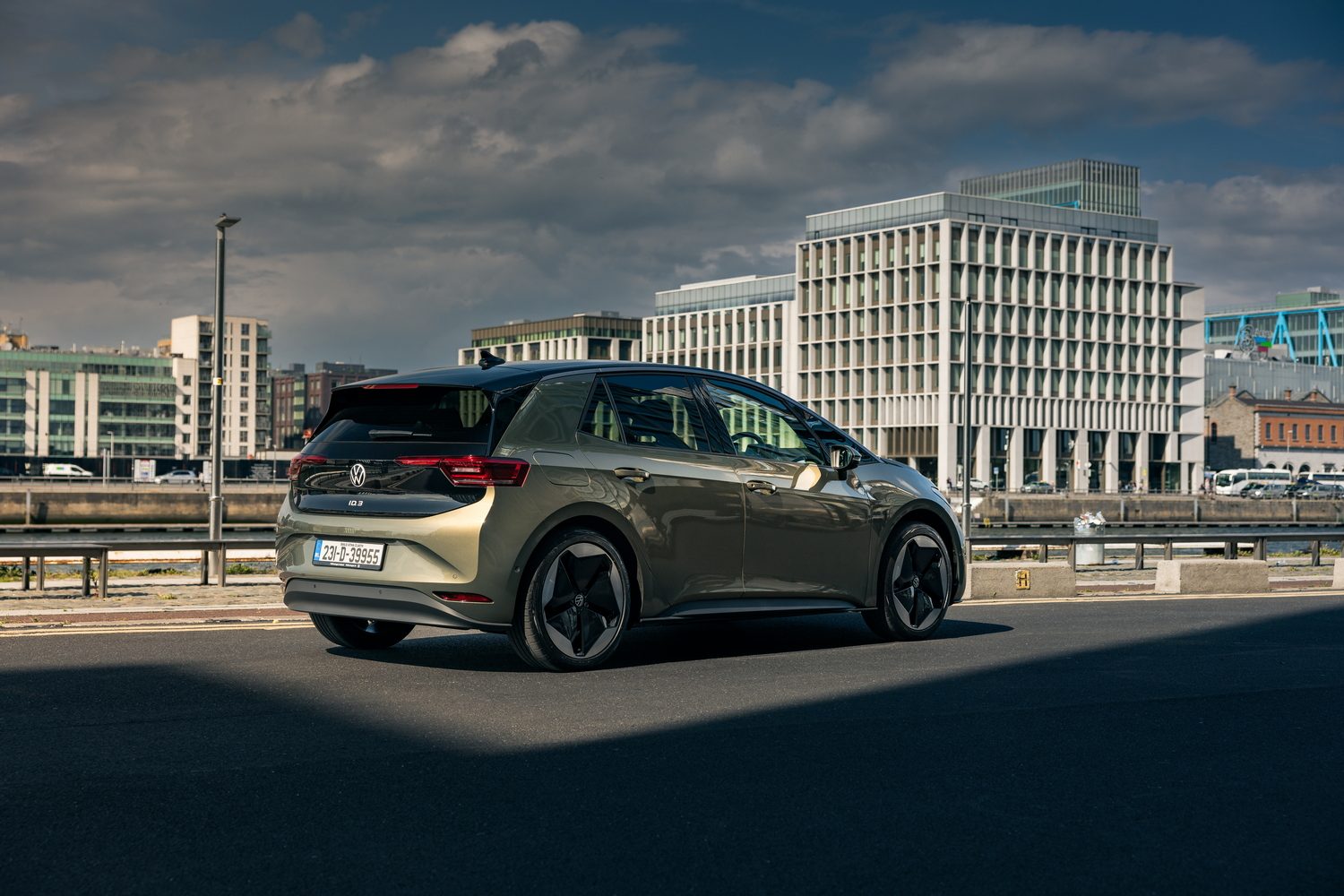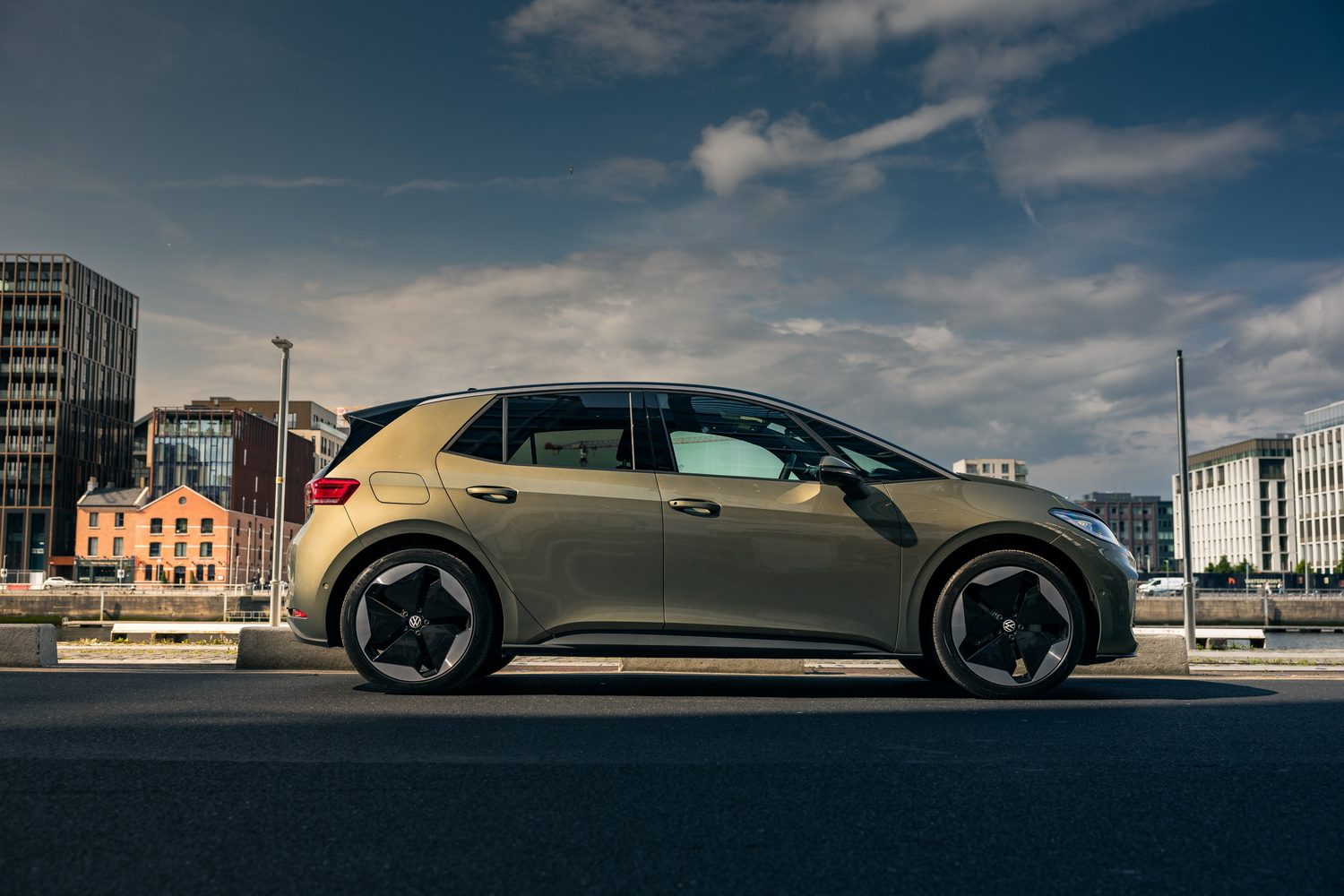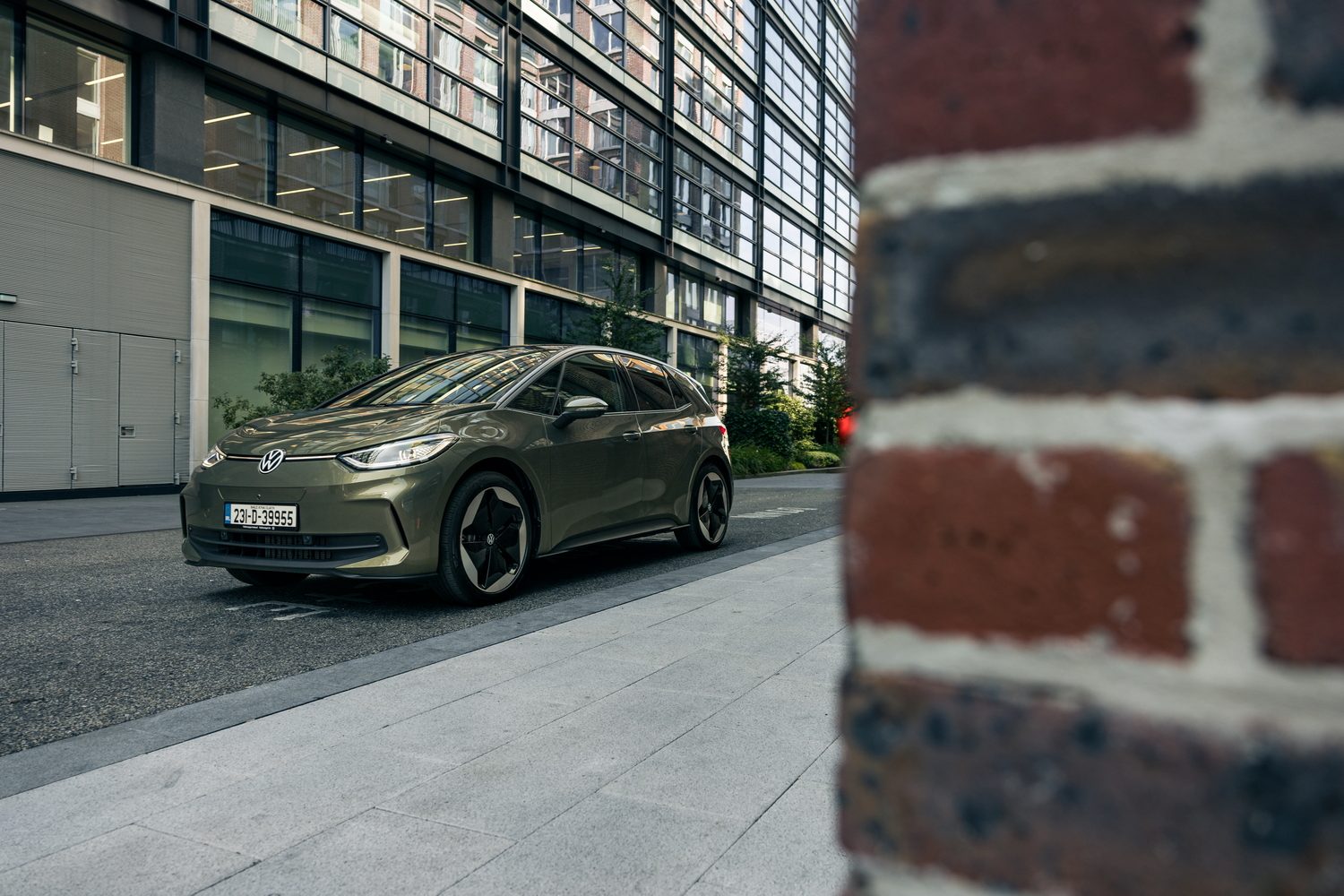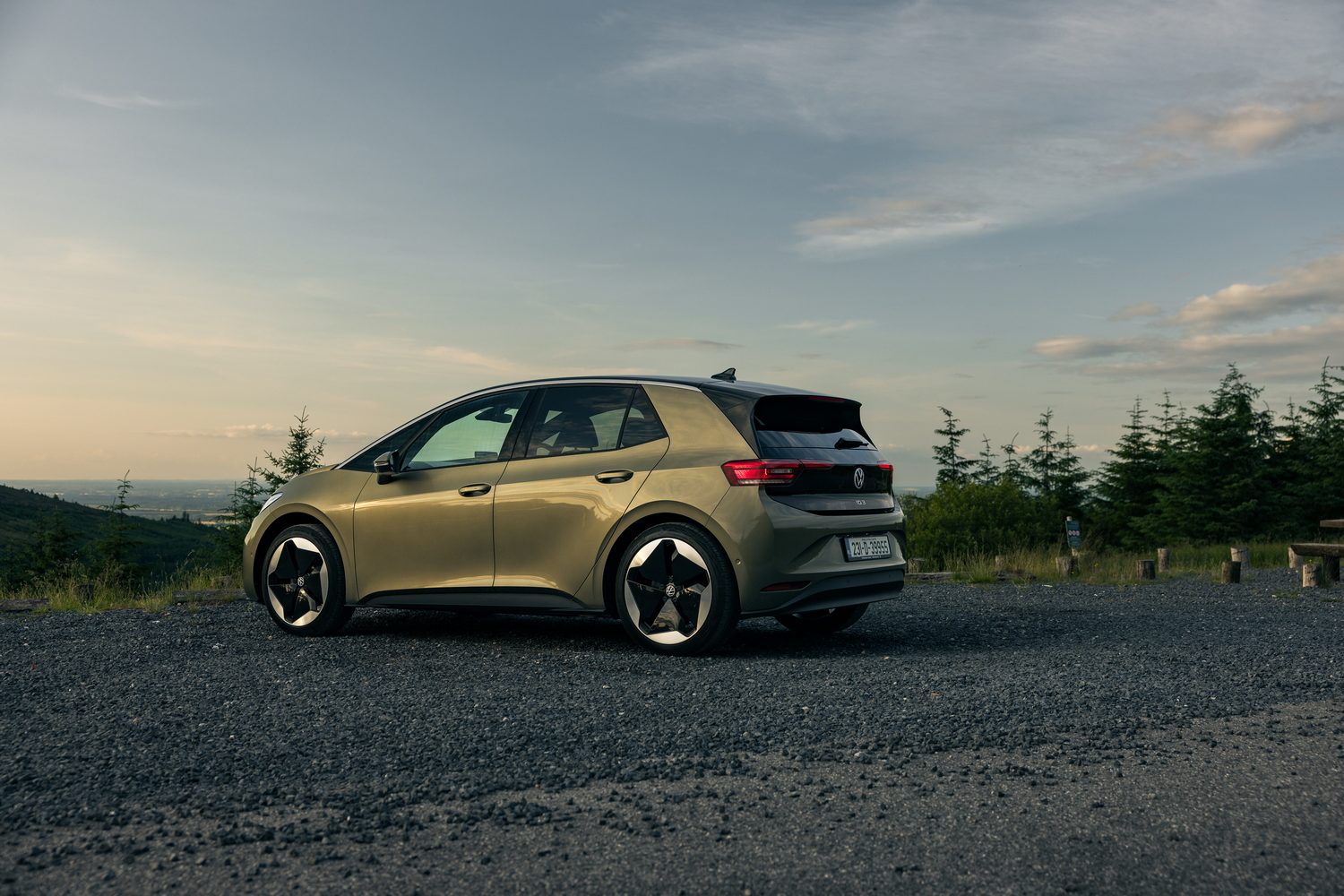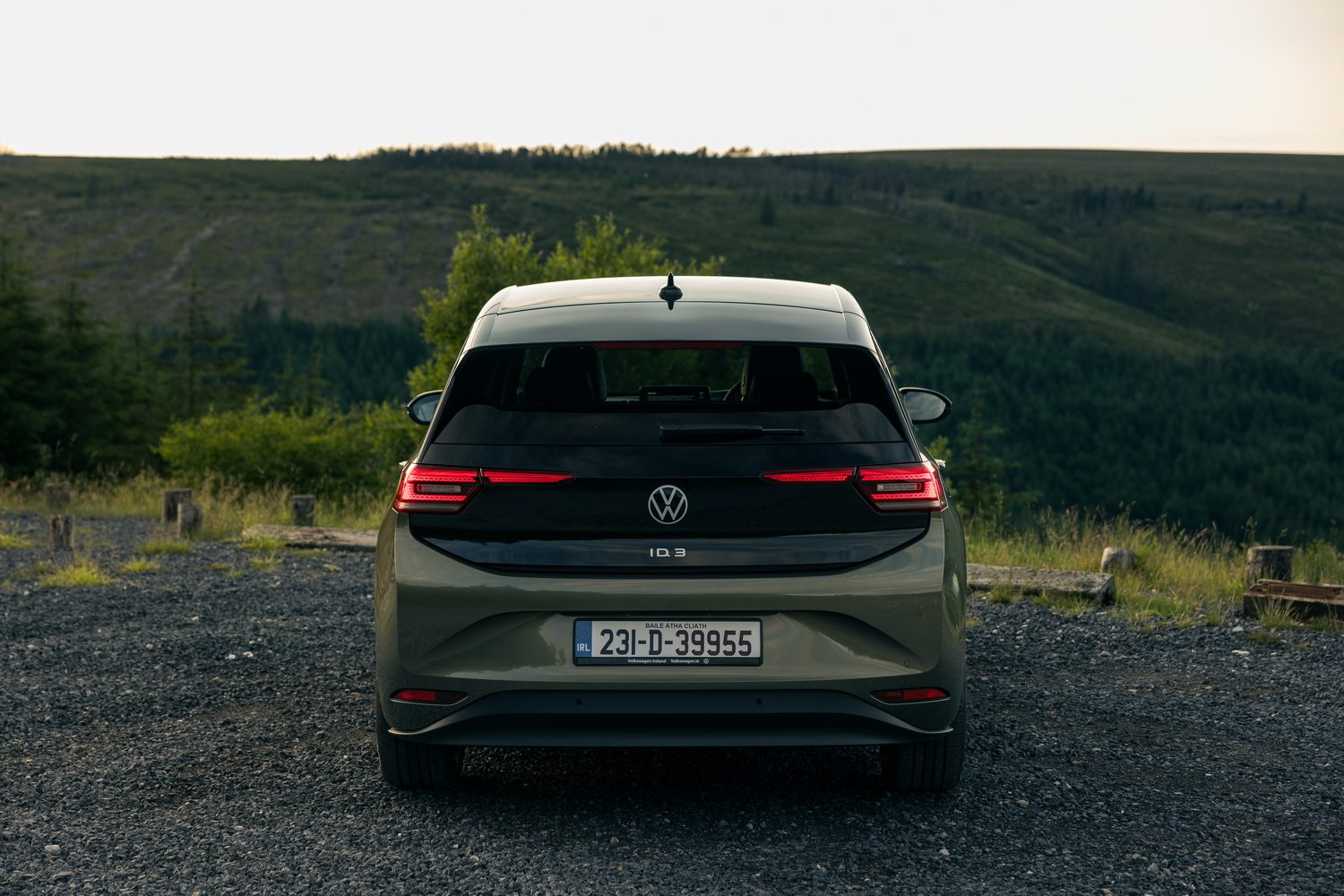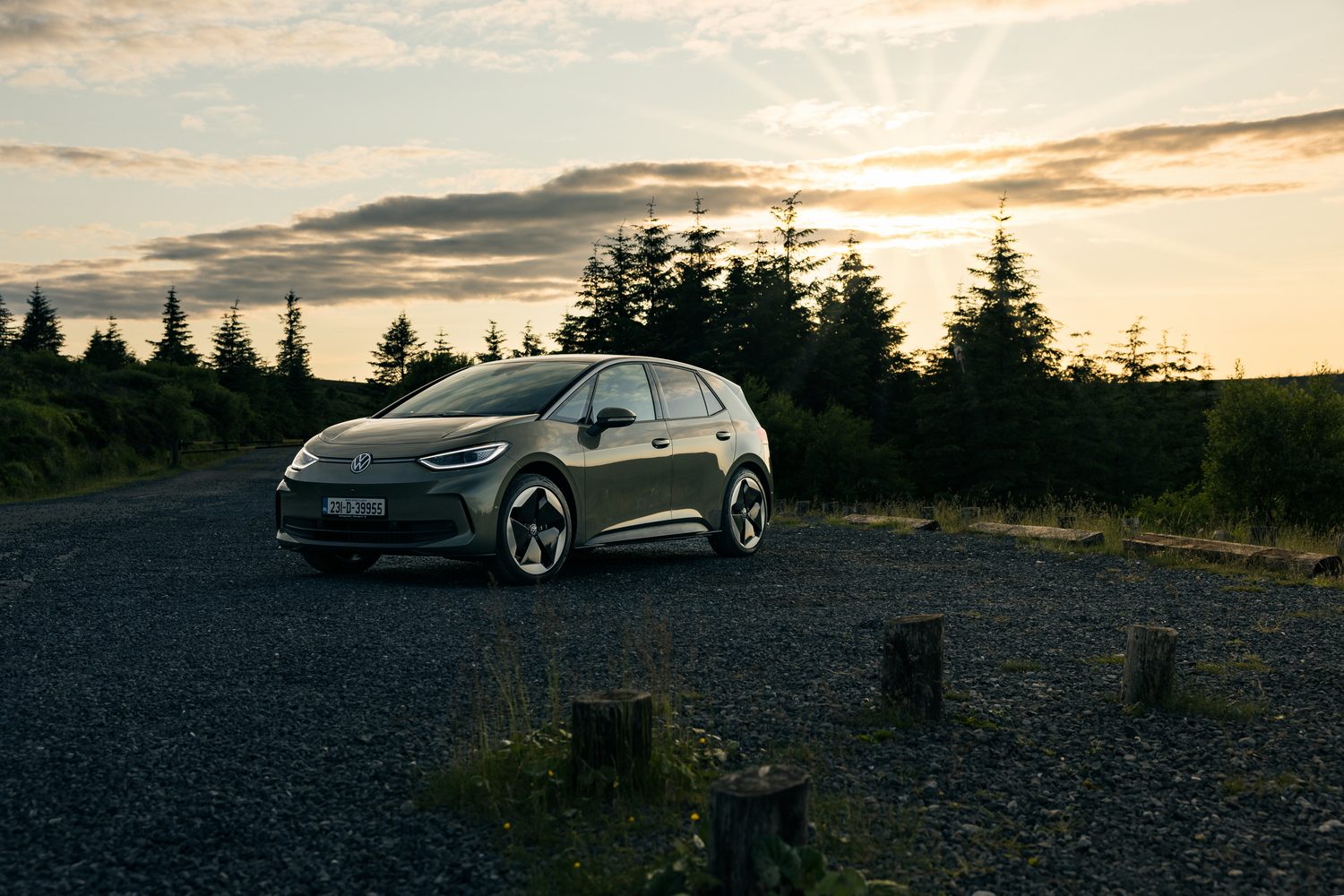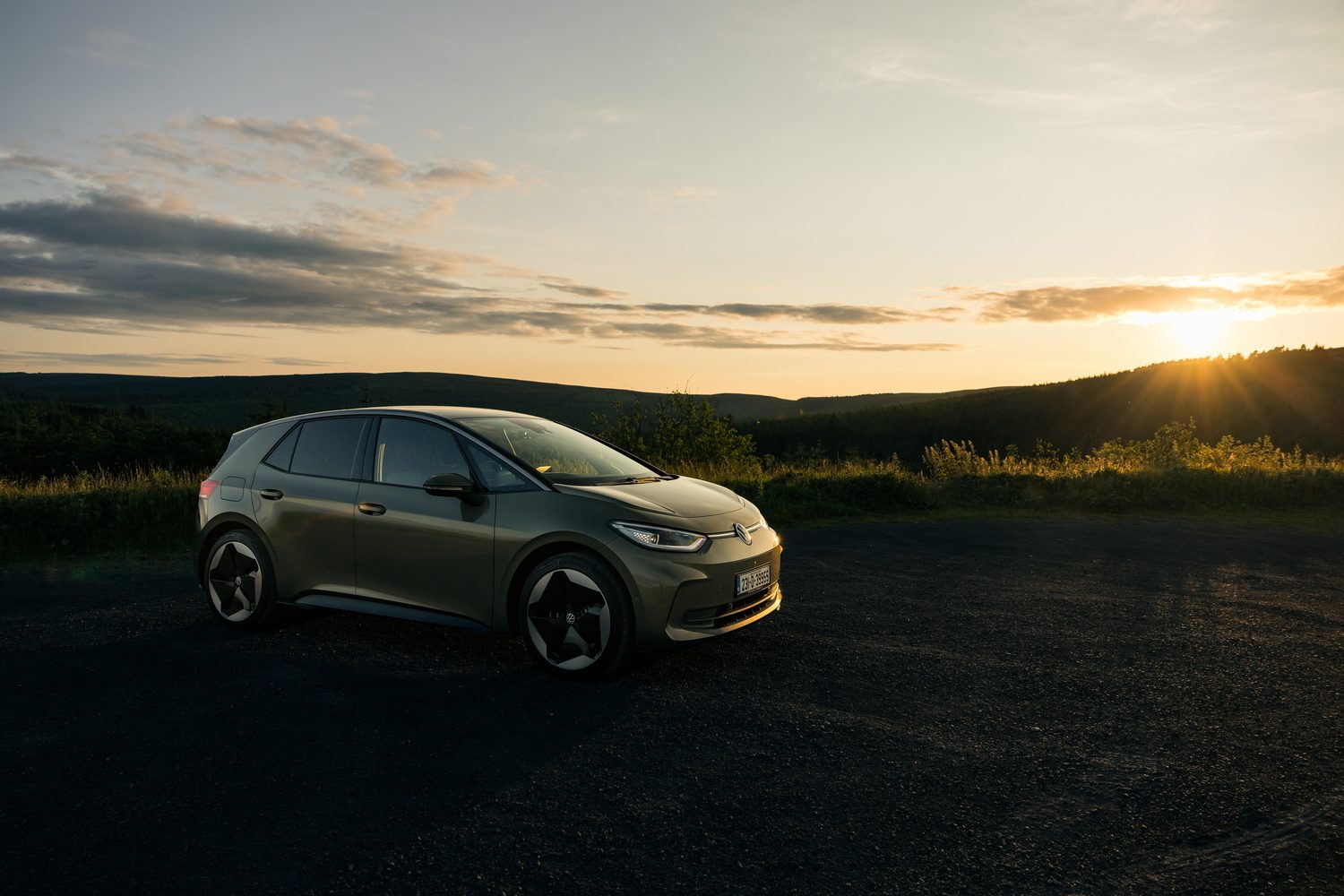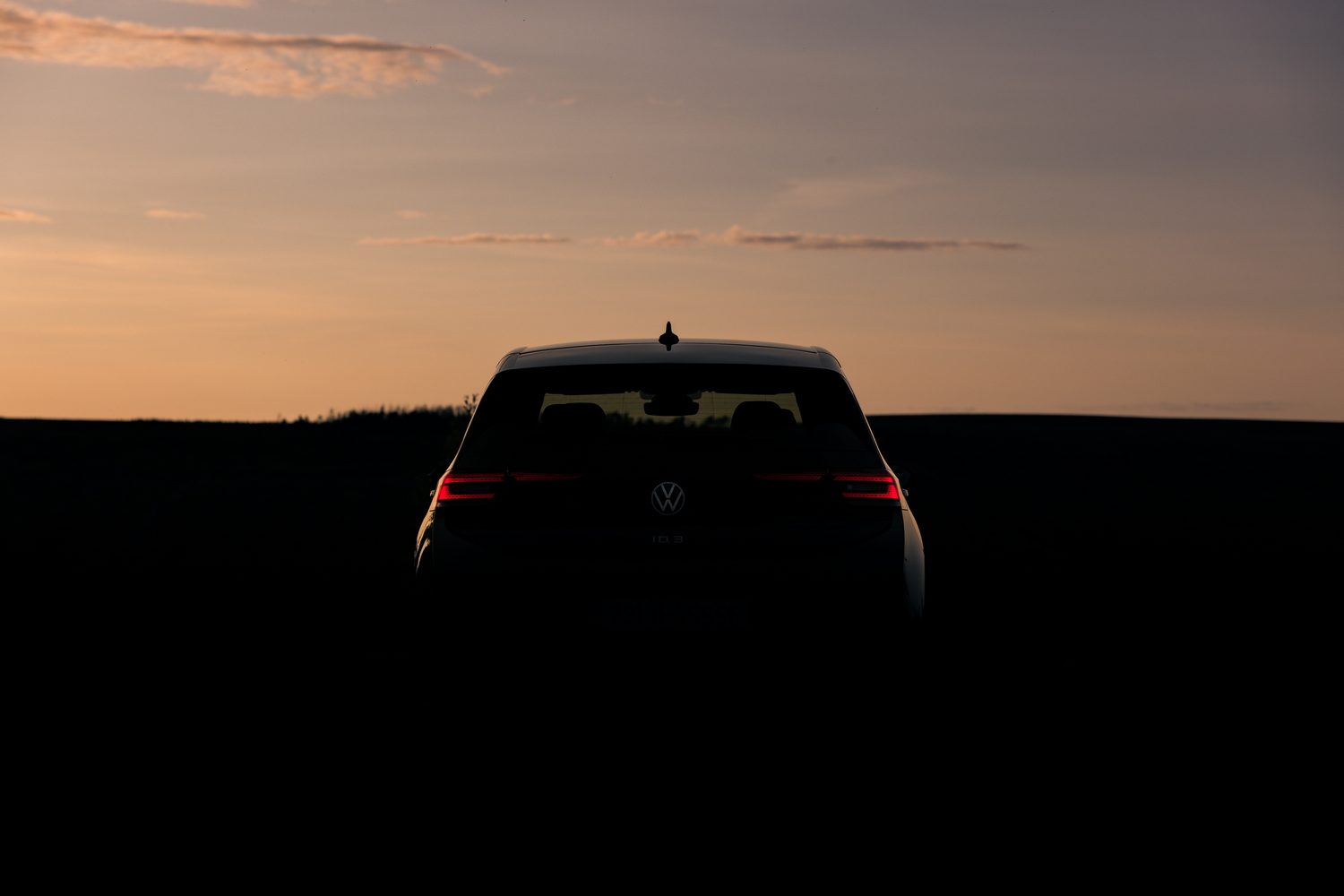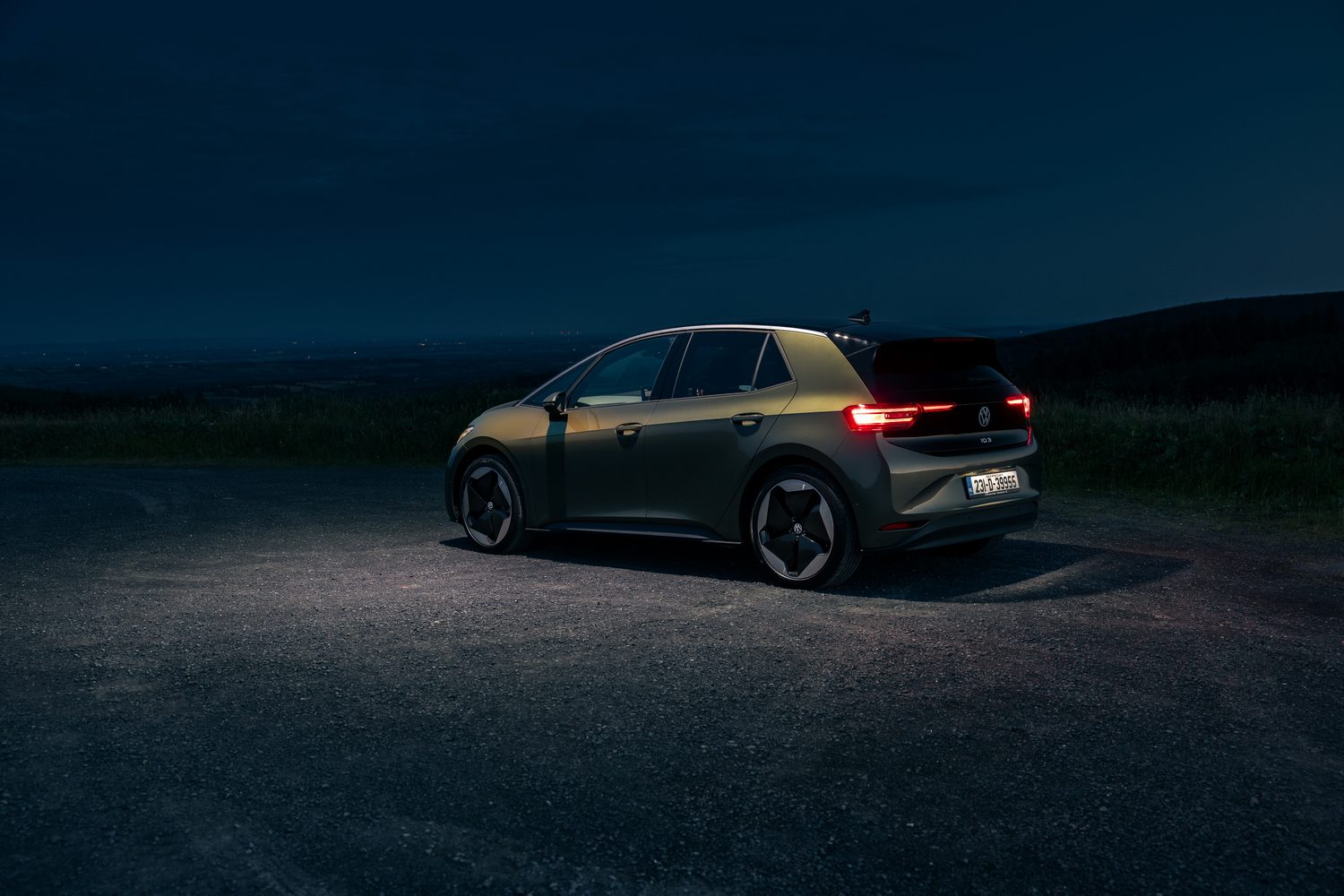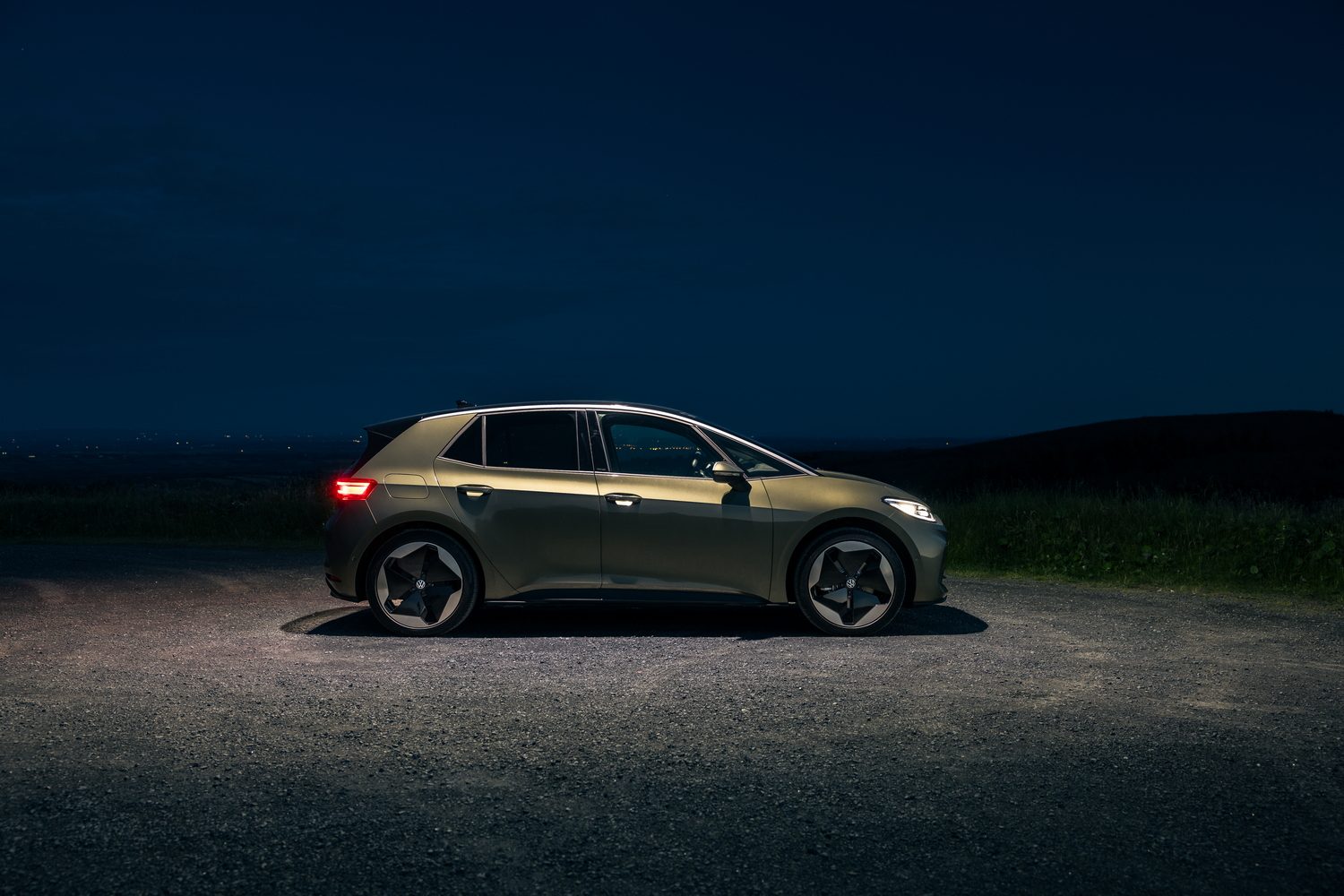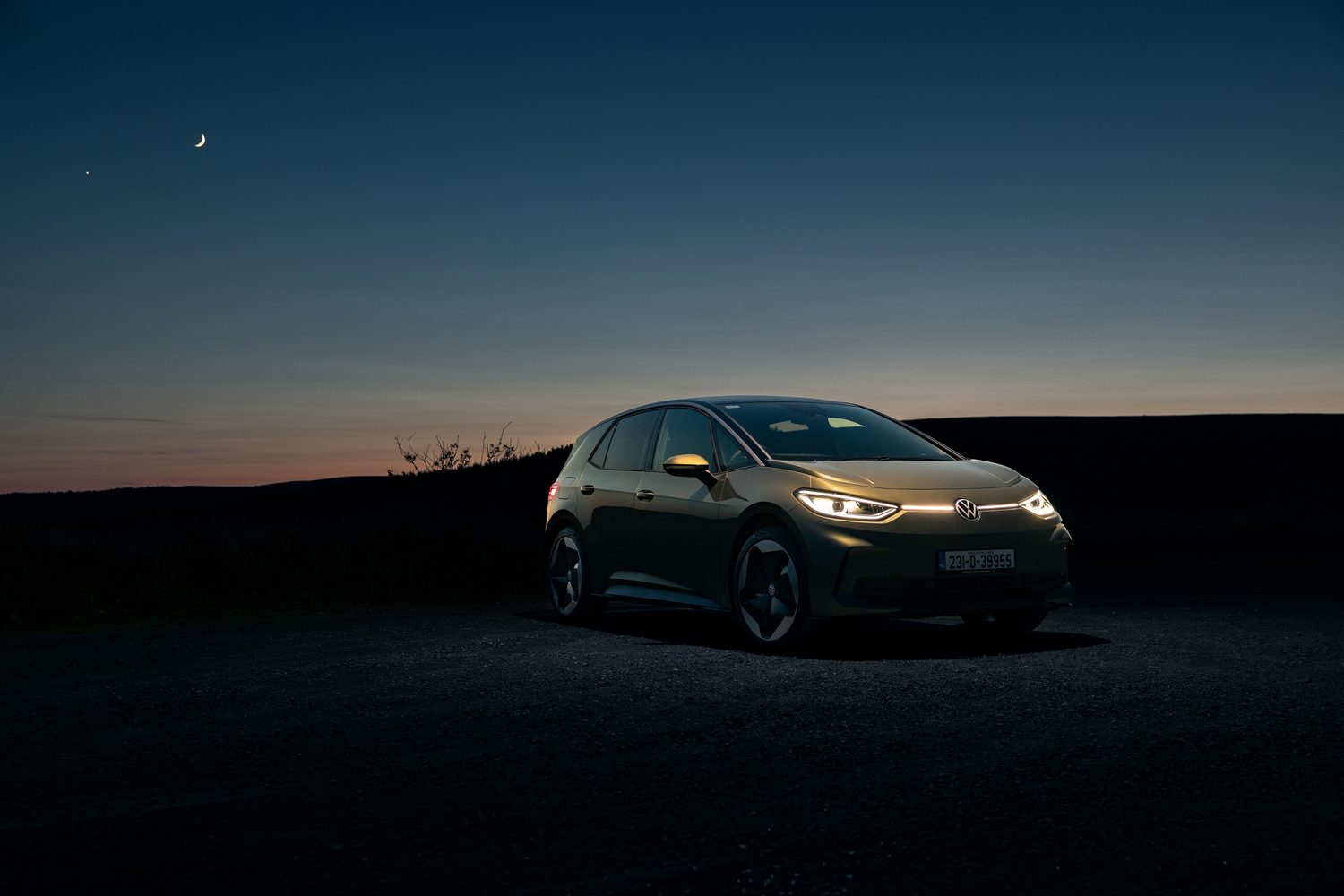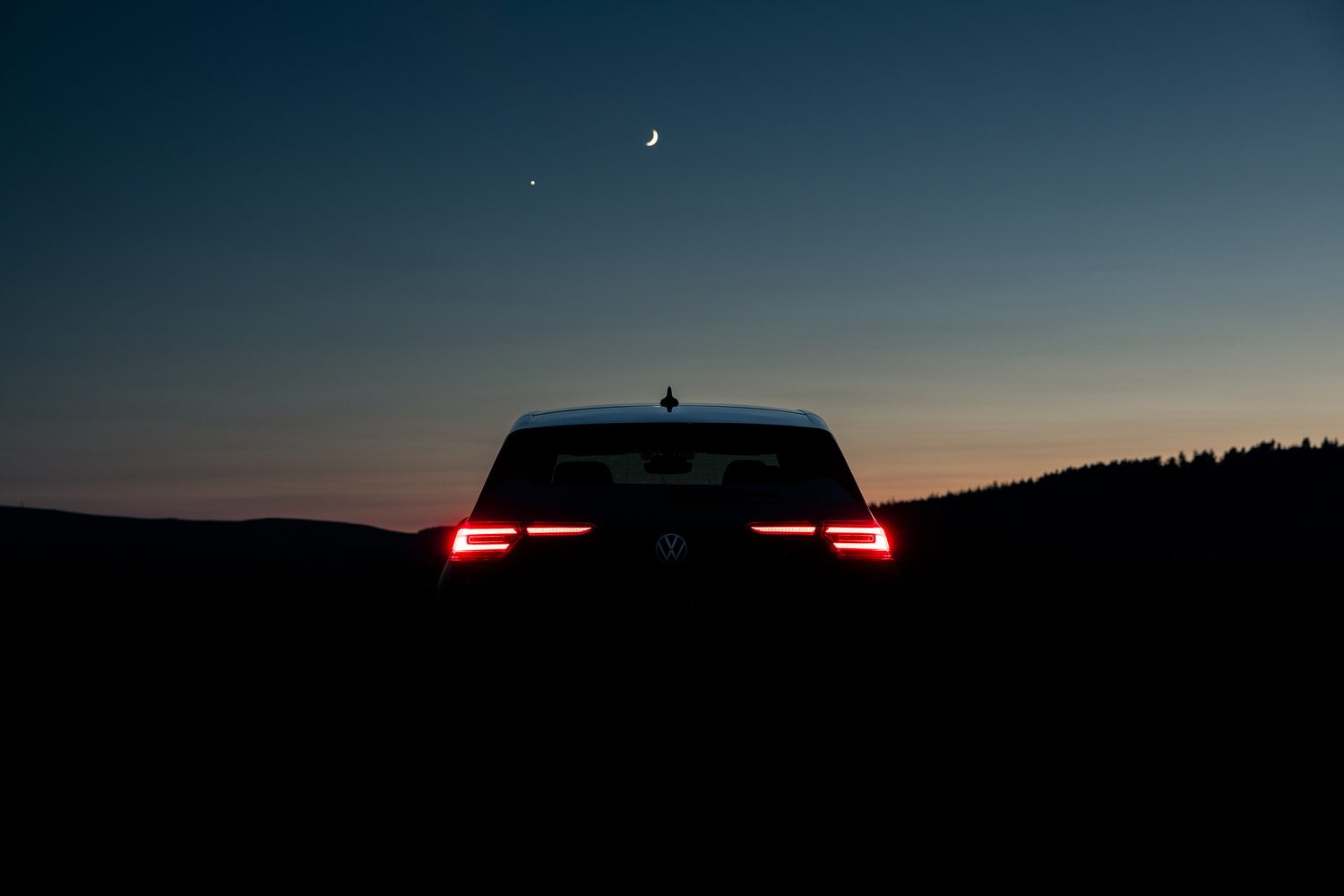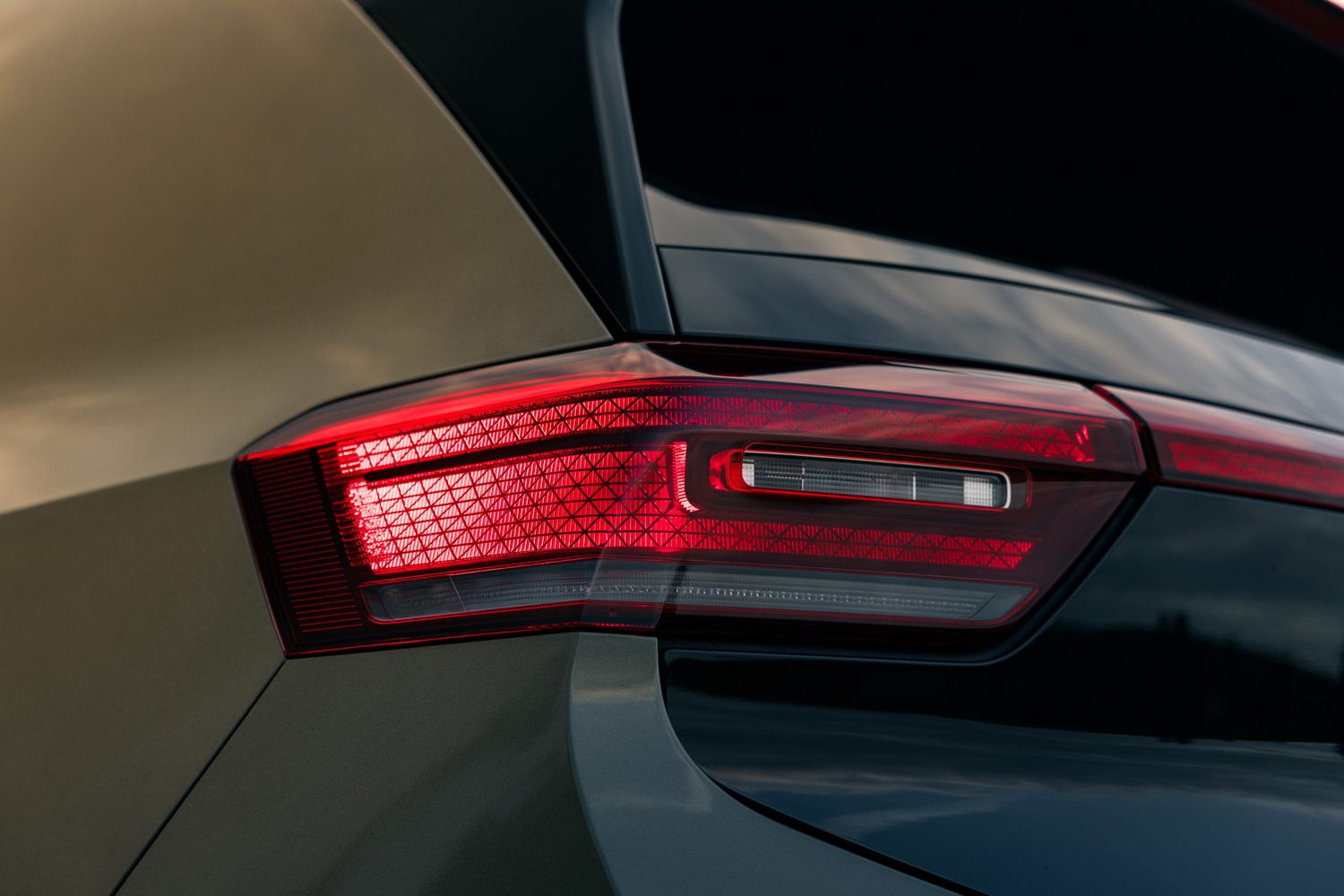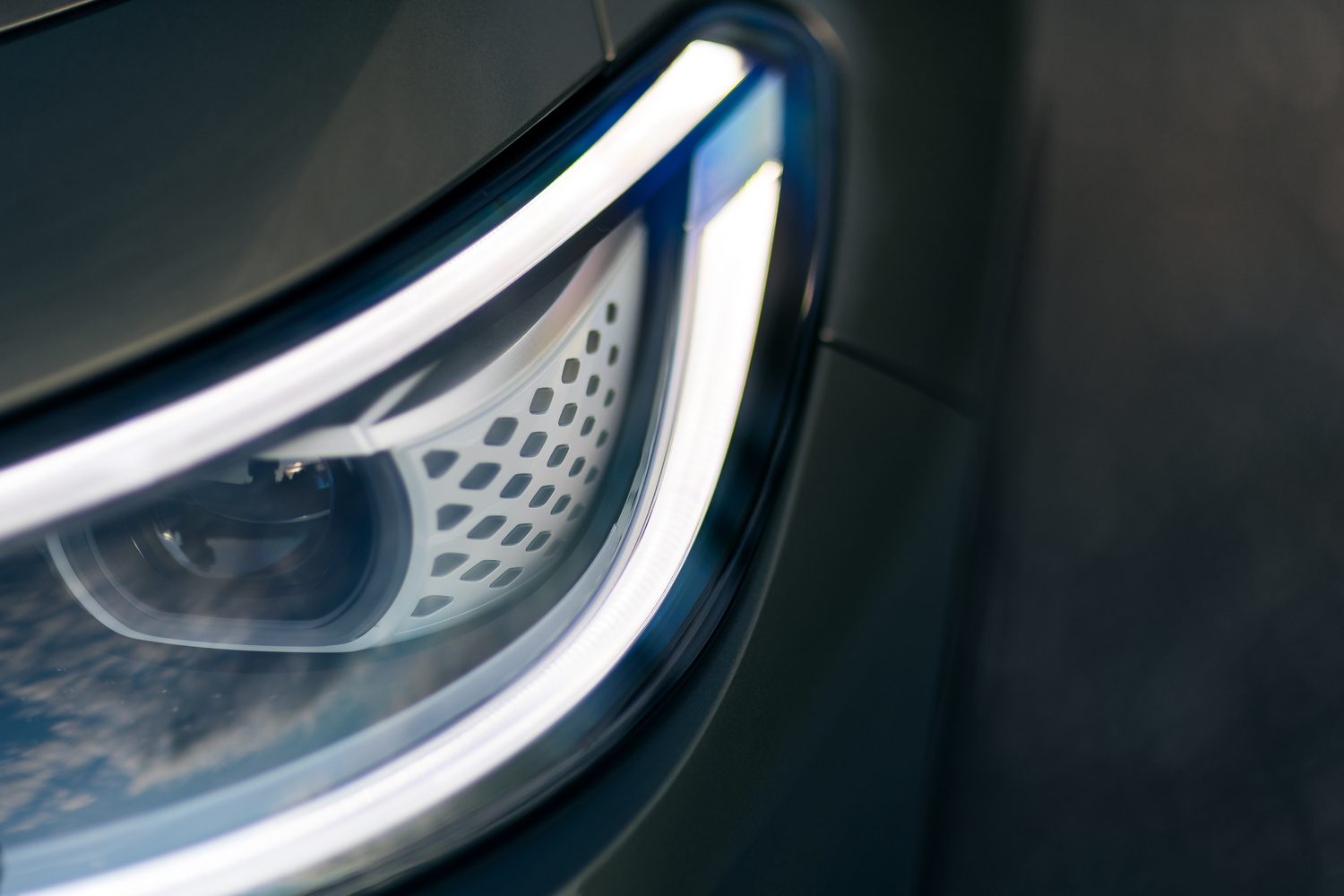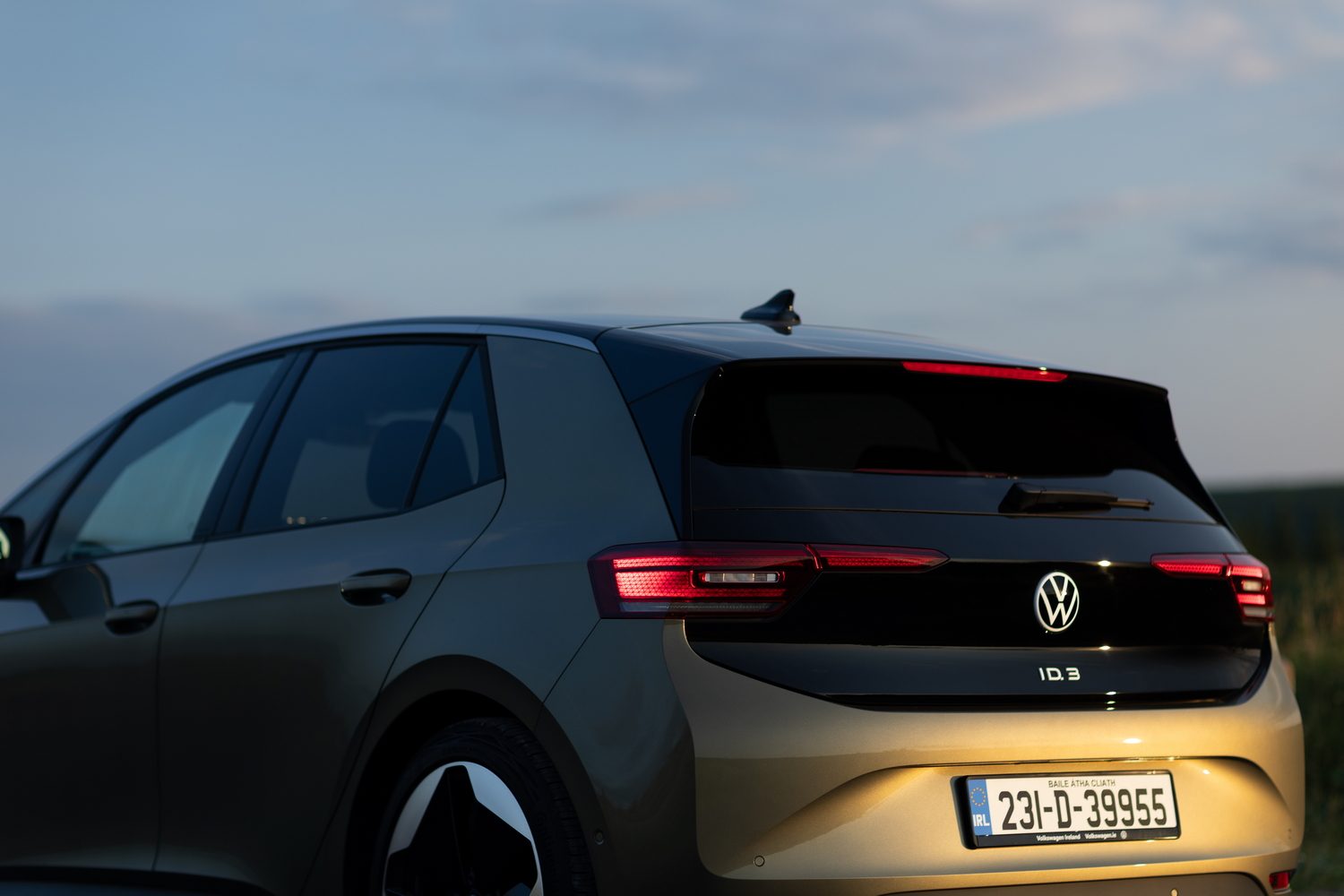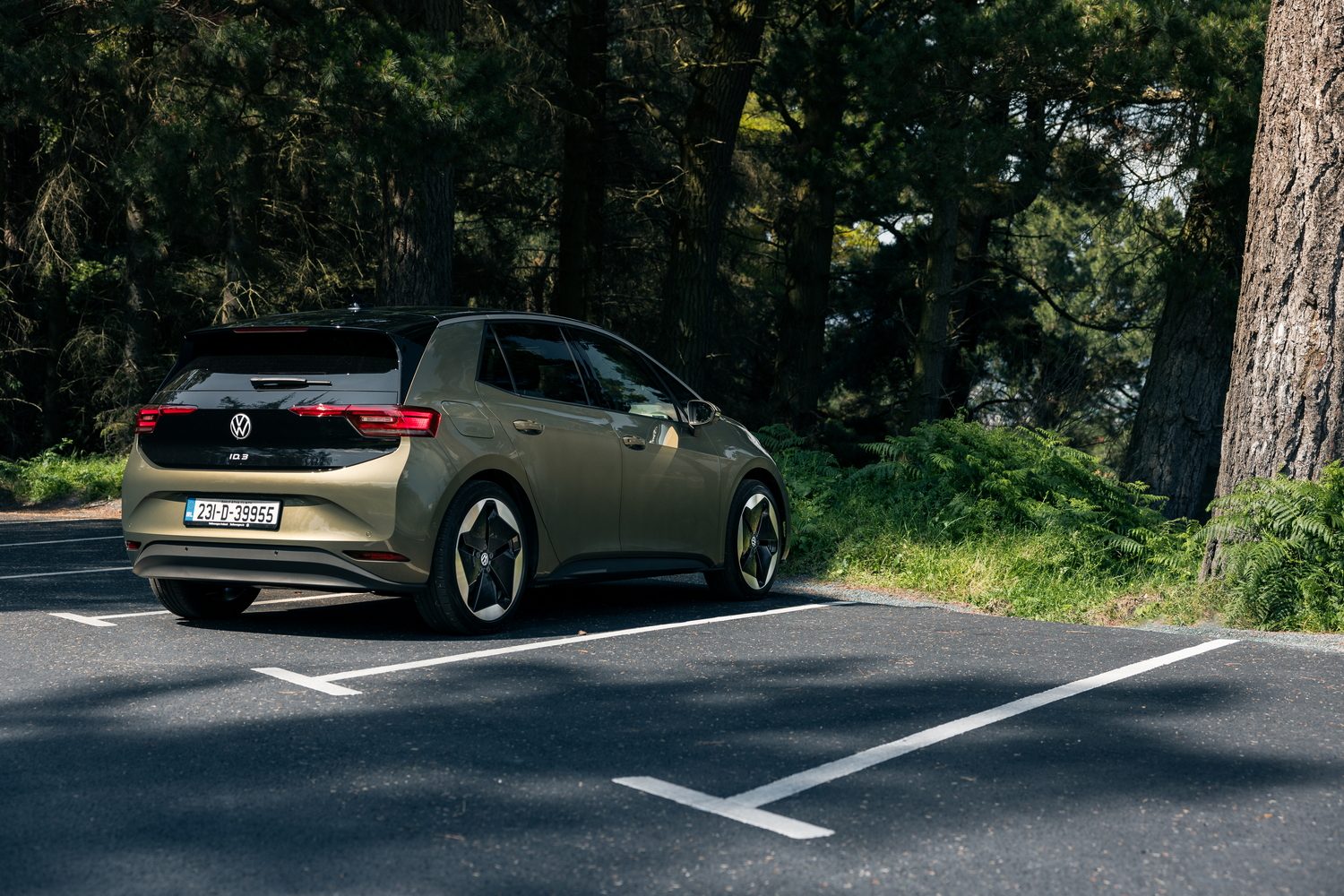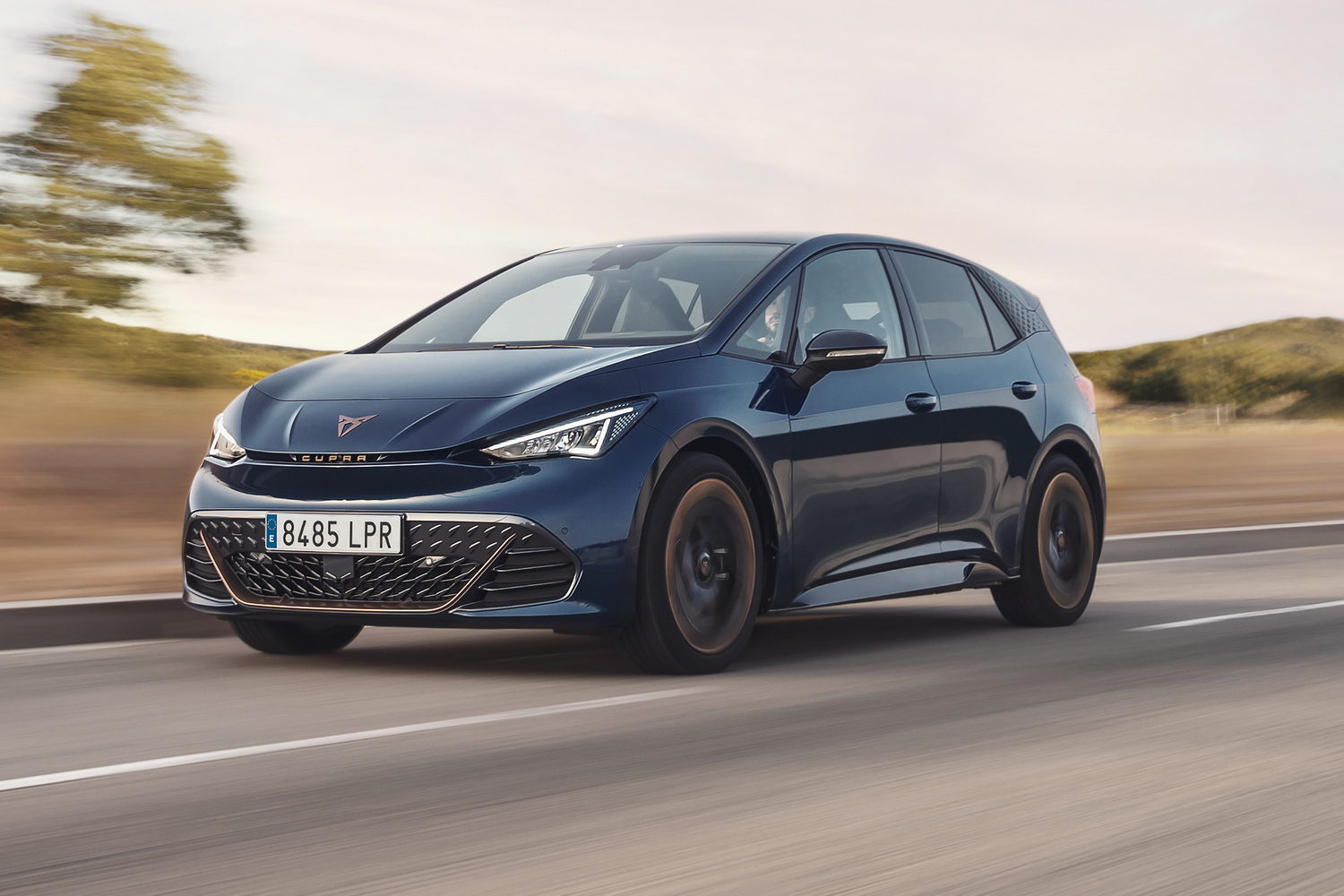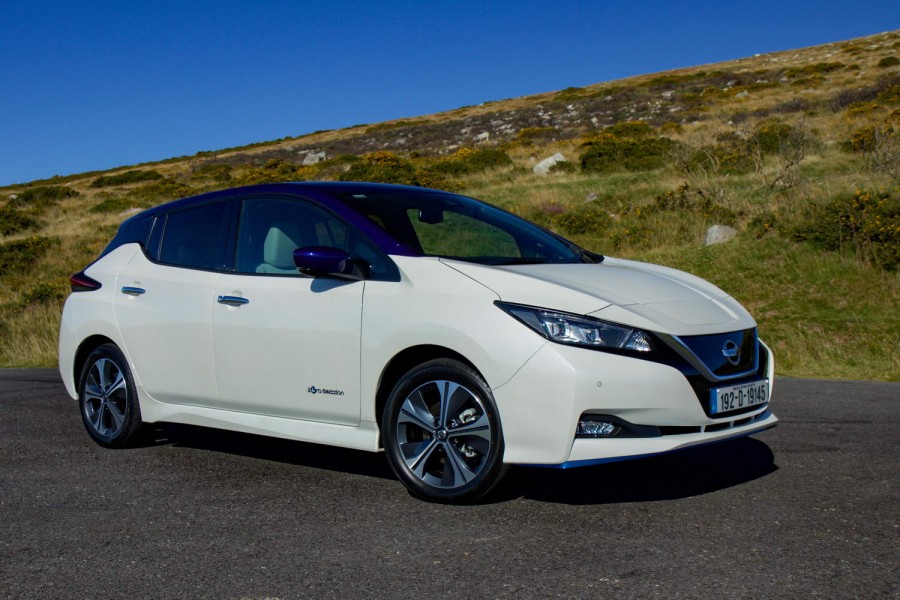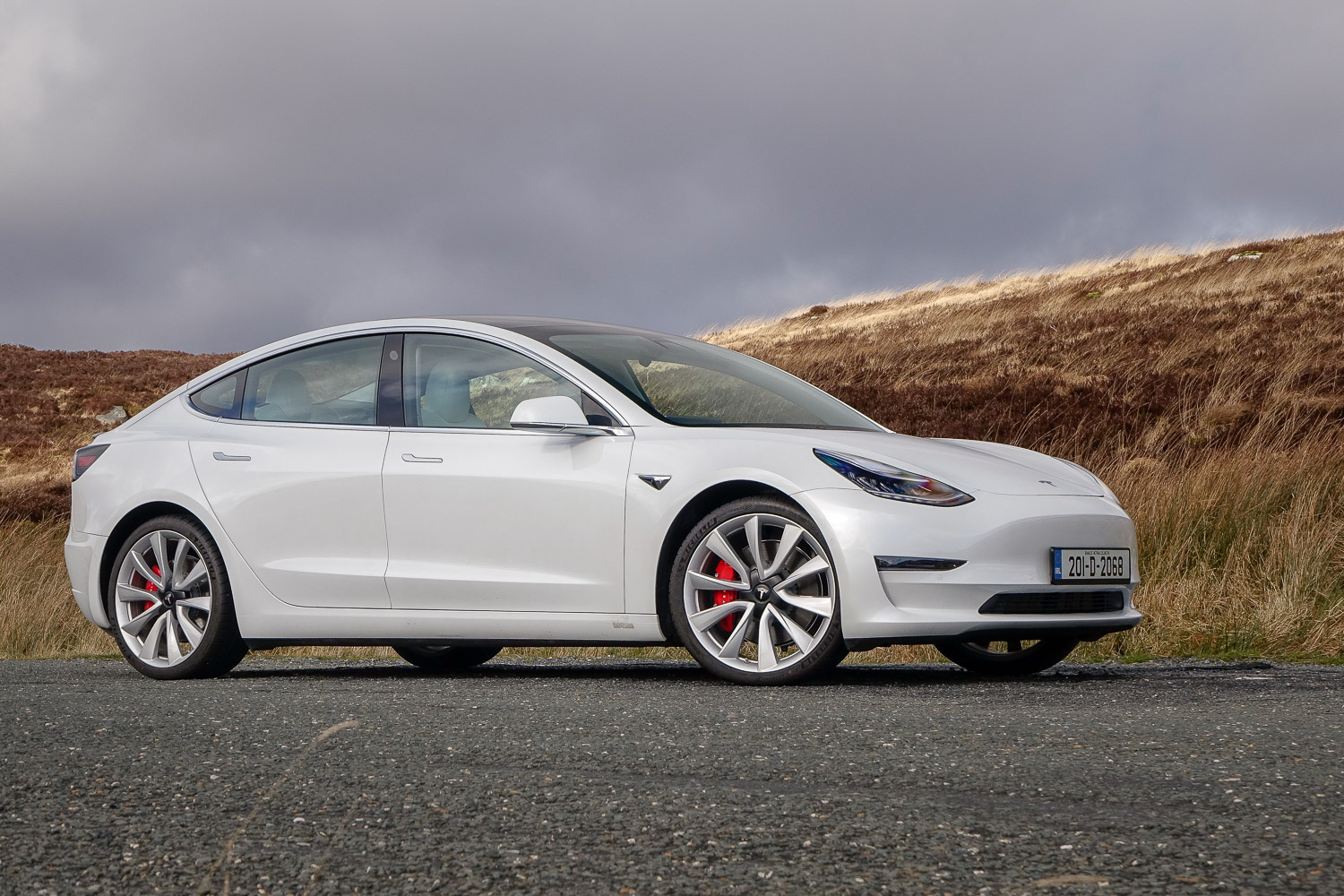Volkswagen ID.3 overview
The ID.3 was the first Volkswagen ID model, initially launched in 2019, and it's now time for a midlife update. A modest exterior refresh includes more body colour than before, most noticeably at the back of the bonnet, which used to be black, making the bonnet appear shorter than it was. The change visually lengthens the car and works well with the new front bumper - reshaped to improve the car's aerodynamics as well as its look. Our test car shows off one of the new paint colours, called Dark Olivine Green Metallic.
Inside, there's a noticeable step up in interior quality and ambience, while new software brings with it improvements and extra functionality. The core recipe of the ID.3 has not changed of course; it's still a five-door electric hatchback of similar size to the Volkswagen Golf on the outside, with more space inside thanks to the packaging of the electric system. Somewhat surprisingly, there have been precious few new entrants from the premium brands to compete head-on with the ID.3 since its launch, so its biggest rivals are the Cupra Born - with which the VW shares its underpinnings - and the evergreen Nissan Leaf.
The Volkswagen ID.3 model range
Although we expect further additions to the updated ID.3 line-up in time - including a sporty new version with 286hp - the Volkswagen Ireland website lists two different models at the time of writing. The entry-level ID.3 is the Pro, featuring a 58kWh battery chargeable at up to 120kW with an official range of up to 428 kilometres. It's priced at €45,700 before government incentives, which translates as €40,607 as a 'recommended on-the-road retail' price (ROTR) including delivery and a service pack that isn't mandatory.
Standard equipment is generous and includes a 10-inch touchscreen, two-zone climate control, four USB ports, adaptive cruise control, Android Auto and Apple CarPlay, front and rear parking sensors, navigation, wireless phone charger, heated front seats, 18-inch alloy wheels, auto LED headlights and auto wipers.
Tested here is the ID.3 Pro S, priced at €52,335 before incentives - or €52,759 as a ROTR price. Most of that goes on the bigger battery, a 77kWh item for a WLTP-ratified range of up to 557km on the standard 19-inch alloy wheels. Those pictured are the stylish, optional 20-inch 'Sanya' rims. Included in the price for the S model is a heat-reflecting windscreen, augmented reality head-up display, 30-colour ambient lighting and ArtVelour comfort seats with electric adjustment for the front two. On the subject of seats, the S model only gets two in the back, presumably to reduce weight in a bid to offset the extra mass of the larger battery pack.
The Volkswagen ID.3 interior
If you don't think you can get by with just two rear seats, then you'll have to go for the ID.3 Pro model, which is a shame, as the Pro S has a noticeably nicer cabin thanks to the ArtVelour material on the seats and on the redesigned door cards. Those still feature the same electric window controls we're not huge fans of, but the perceived quality in terms of soft-touch materials has improved immeasurably. That extends to the revised dashboard, too.
New software has undoubtedly improved the responsiveness of the infotainment system though those that dislike the sliders for the volume and cabin temperature in the original model won't be happy to see they've been retained. As ever, we'd prefer separate physical switchgear for the climate control.
As before, the drive selector is up high behind the steering wheel, and you twist it forward or back as required. There's a 'B' setting as well as D if you want a more pronounced brake energy regeneration effect. It's a cinch to use, quite intuitive and it frees up the centre console. There you'll find a little storage net at the front, two decent cupholders, a sloped slot with the wireless charger built into it and then a long section that can be sub-divided as you wish - and covered over. Inside, there are two USB-C ports while another pair is accessible by the rear-seat passengers behind.
There's no centre seat in the back of the Pro S car so the two passengers have plenty of elbow room and an extra hollow for storage. Incidentally, the middle passenger in the back of the five-seat ID.3 Pro gets the same flat floor as the outer two seat occupants. There are several pockets in the backs of the front seats as well and the central armrest in the middle of the rear backrest holds two cupholders. There are ISOFIX points for the two rear seats, while the backs split 60:40 and fold down. With the boot floor in its uppermost position, that means a flat area of up to 1,267 litres volume. With the rear seats in use, there's up to 385 litres of luggage volume, including a usefully sized space under the movable floor, perfect for keeping charging cables away from the rest of your stuff.
The Volkswagen ID.3 driving experience
Volkswagen doesn't claim to have made the ID.3 quieter with this update, but I'd swear that it has. Perhaps the aero changes to the front of the car have made it cut through the air a little cleaner, as there's precious little wind roar at motorway speed. Likewise, you can never hear the electric motor at work nor the tyres rumbling over the road surface. It makes for serene progress and adds an upmarket feel to the experience.
The rear-mounted electric motor produces up to 204hp and 310Nm of torque. Those figures would have been enough for a hatchback to be labelled "hot" not so long ago, but as with nearly all EVs, the ID.3 carries more weight than an equivalent internal combustion engined car would at not far off 2,000kg. Still, the combination of zero noise and the fact that maximum torque is available from the off means the ID.3 feels pleasantly quick in everyday driving, without ever feeling too fast or scary for the uninitiated.
Indeed, the changes to the assistance software have apparently dialled back the 'enthusiasm' of the chassis, making it feel much less rear-lead than before. Keen drivers may be disappointed by that, but the majority of buyers will be comforted by the quicker-acting traction control, which seems prescient in its action. It leads to a car that feels utterly stable and controlled no matter what the situation or speed. In fact, the only negative aspect of the driving controls is a brake pedal that feels too 'soft' for our liking - though the braking power on tap is never in doubt.
Even on the 20-inch wheels of our test car and their low-profile tyres, the ID.3 rides comfortably. And that's not at the expense of body control, which is exceptionally good even on really poor road surfaces with fiendish cambers and bumps thrown in for good measure. Decent steering helps make the car more enjoyable cross country than you'd expect.
Other than a slight change to the steering assistance and response to the accelerator, there doesn't seem to be really big differences between the various driving modes - Eco, Comfort, Sport and Individual. We drove over a wide range of surfaces and road types and the indicated average efficiency varies considerably, from an impressively low 15kWh/100km cruising at 100km/h to as high as 23kWh/100km on a testing mountain road. This was conducted in July in warm outside temperatures with the air conditioning on. In our hands, we'd expect a real-world range of somewhere between 400- and 500km on a full charge of the battery pack.
Our verdict on the Volkswagen ID.3
There's such focus on launching electric SUVs and crossovers of every shape and size by the car makers that the humble hatchback is seemingly being forgotten - certainly by the premium manufacturers. Hence, four years after it first went on sale, the Volkswagen ID.3 has few direct competitors, by which we mean premium electric hatchbacks. Of course, given the pricing, many will argue that the Tesla Model 3 makes for a compelling alternative, but the changes made to the ID.3 help put distance between the two in terms of quality, and the VW is arguably now the car it should have been from the start.

